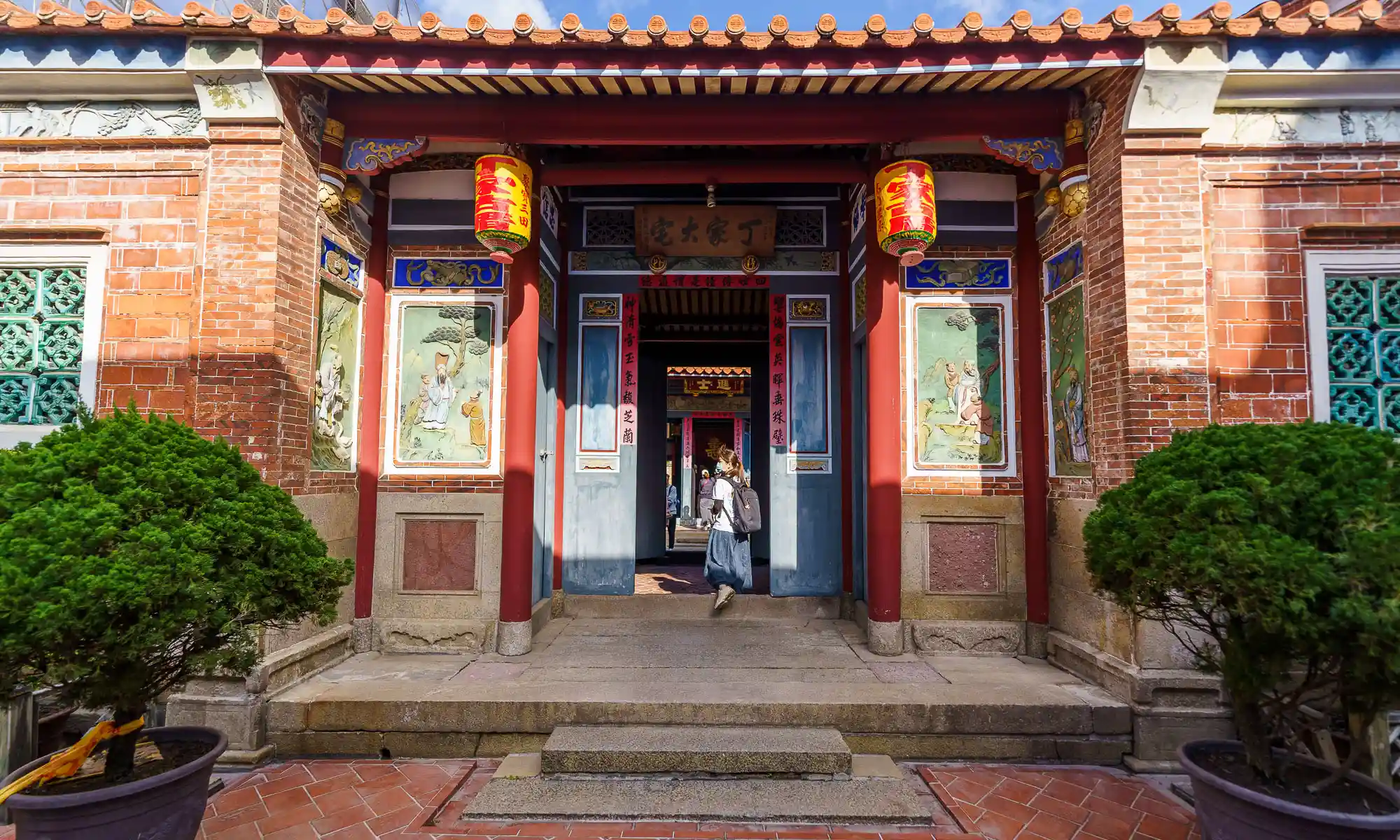An Insider’s Guide to Changhua County:
A Small Nugget Filled With History
Changhua County may be Taiwan’s smallest county, but it shouldn’t be overlooked by anyone interested in Taiwan’s rich cultural heritage, or its delicious food. The country is not only home to one of the oldest towns in Taiwan, Lukang, but also several precious attractions that are both fun and steeped in history.
Notably, the town of Lukang is filled with historic temples, national heritage sites and old-timey vendors selling traditional snacks, while Fangyuan to the south is home to vast tidal flats where oysters are still farmed by hand and local farmers offer oyster harvesting eco-tours. The orchards in Changhua are also famous for star fruit, lychee, grapes, guava and watermelon, so if you see any being sold at the market, chances are it’s local.
Lukang Old Street
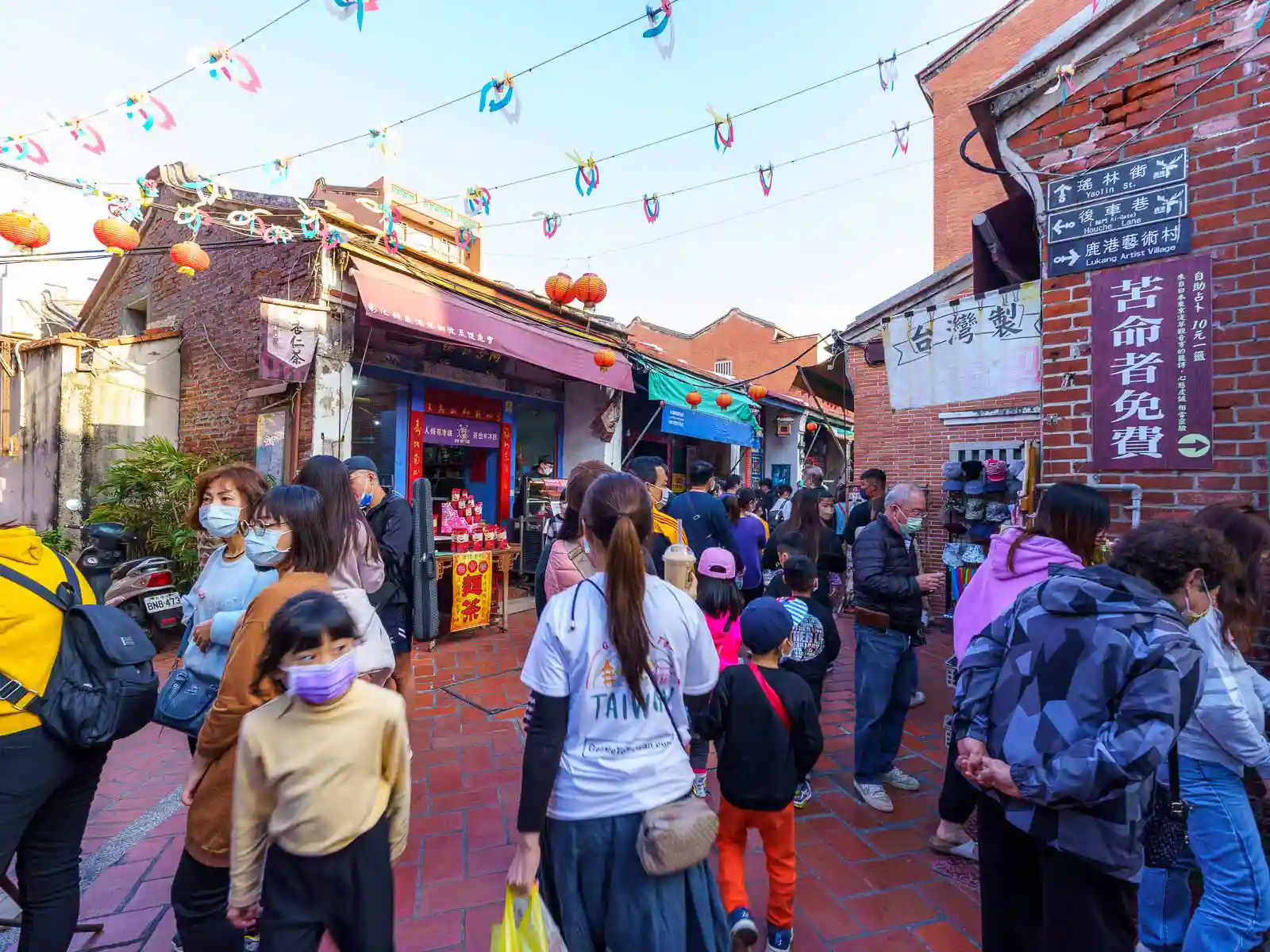
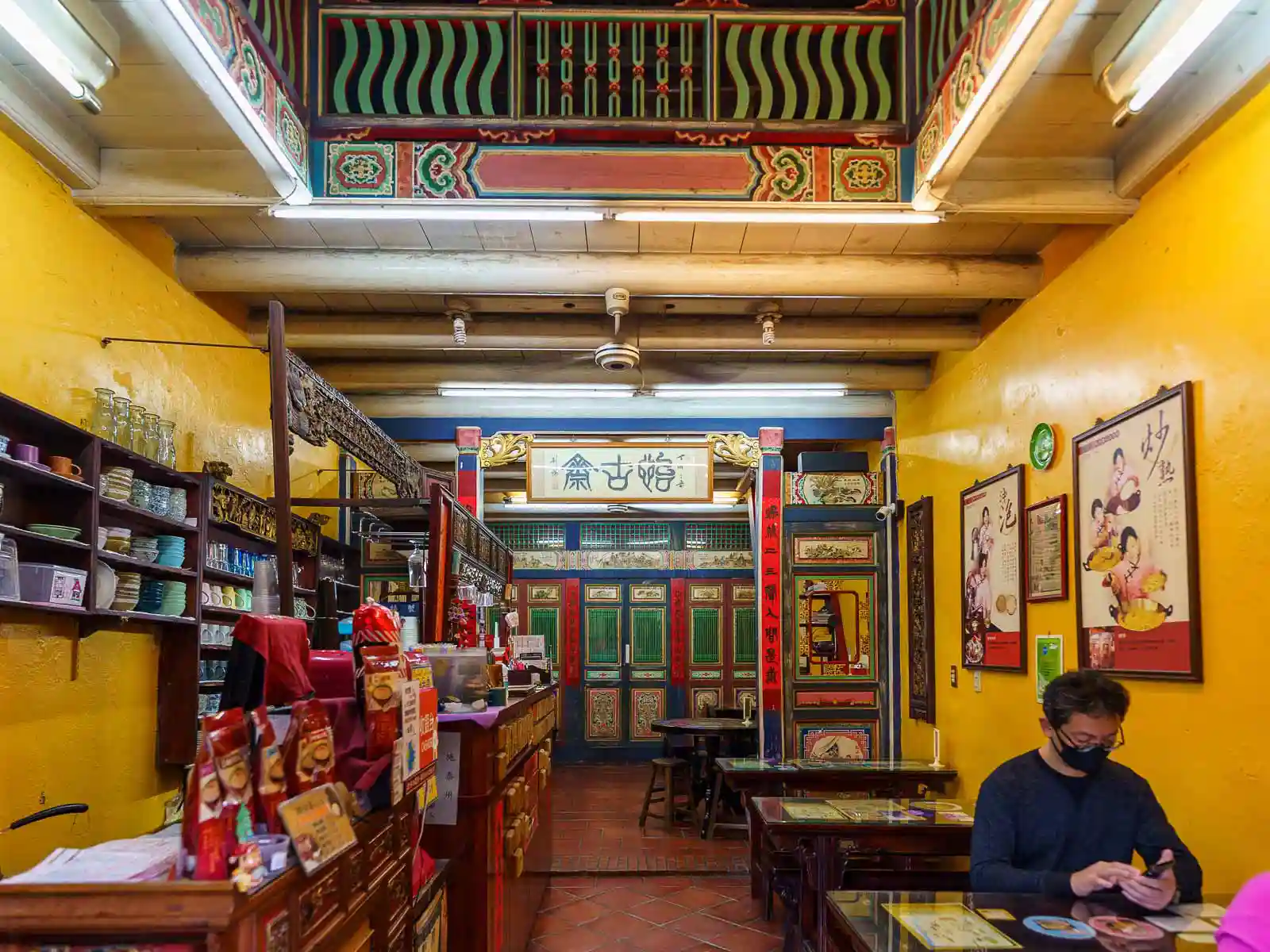
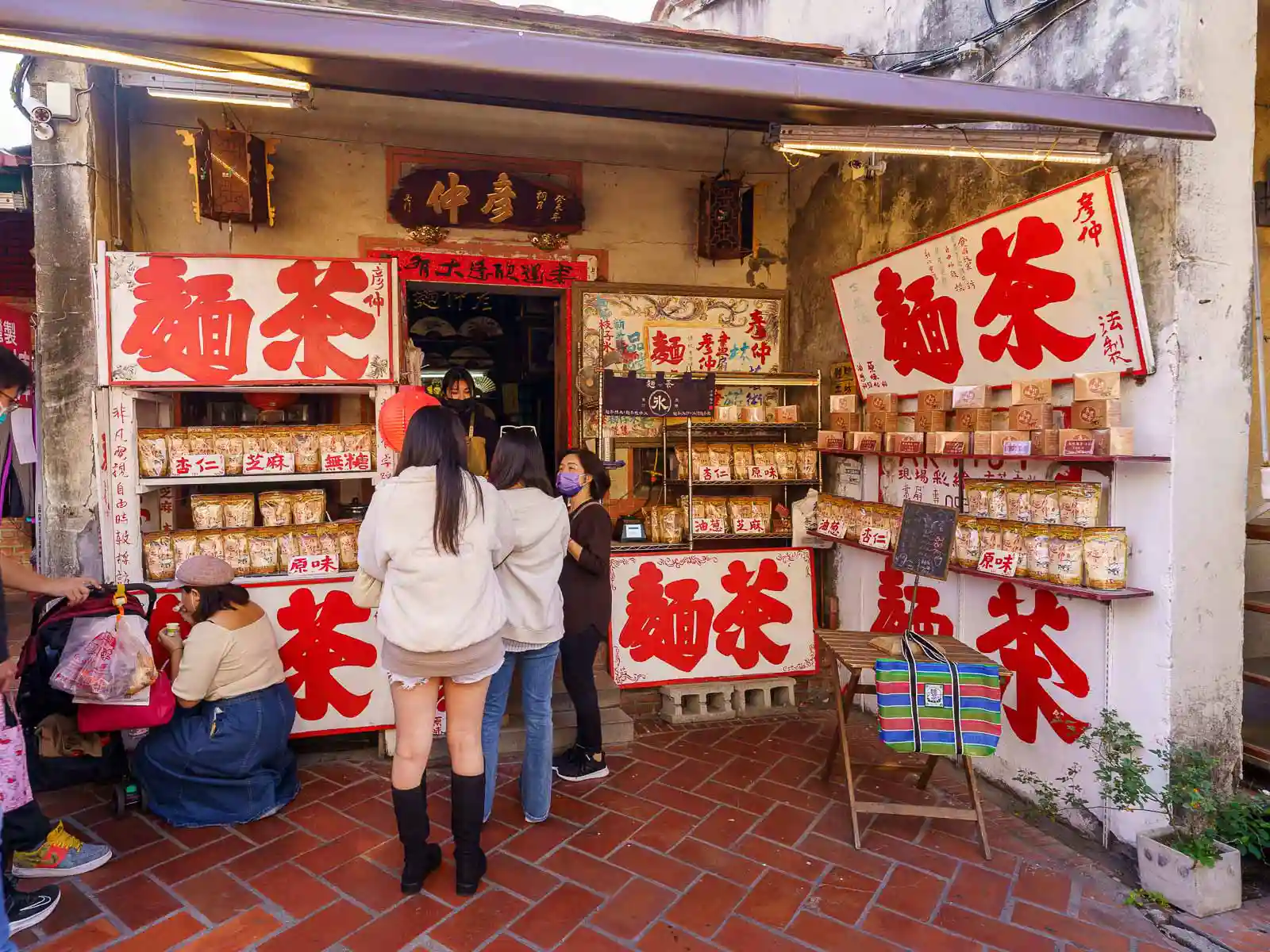
Lukang Old Street, located in the heart of the historic town of Lukang in Changhua County, is one of Taiwan’s most charming old streets and an essential destination for those who want to get a close look at Taiwan’s cultural heritage. The street, known for its well-preserved traditional architecture and proximity to some of Taiwan’s most famous early temples, is lined with single-story red-brick shops and residences. Many residences here still operate traditional family businesses, selling snacks and souvenirs. The street is particularly famous for two delicacies, flour tea, known in Mandarin as “miancha” and cured gray mullet roe, known as “wuyuzi”. Lukang Old Street is only one of several amazing destinations in Lukang’s historic district. Read one for preserved residences, heritage buildings, and well-preserved temples, all of which offer glimpses into Taiwan’s rich history.
Lukang Folk Arts Museum
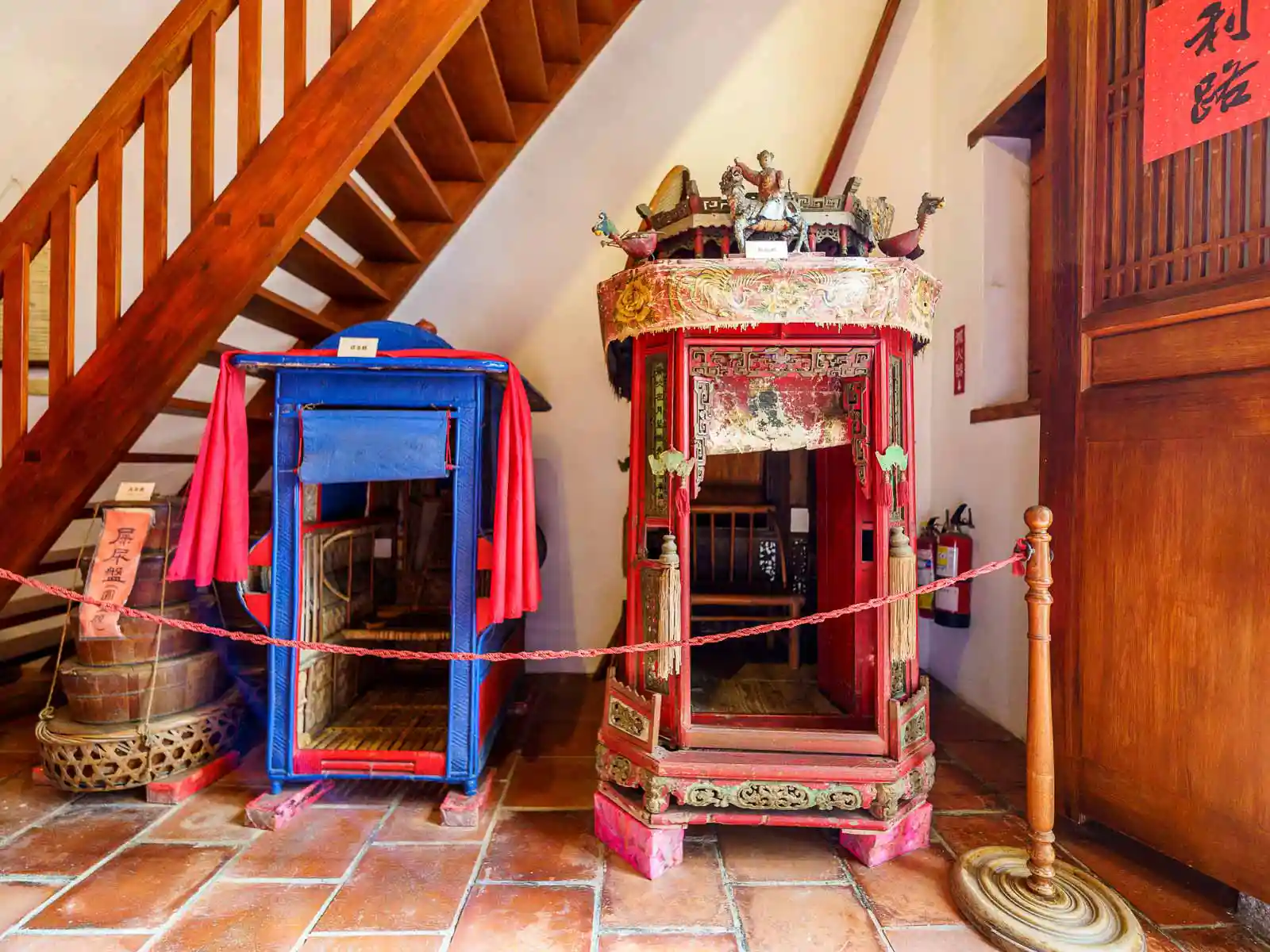

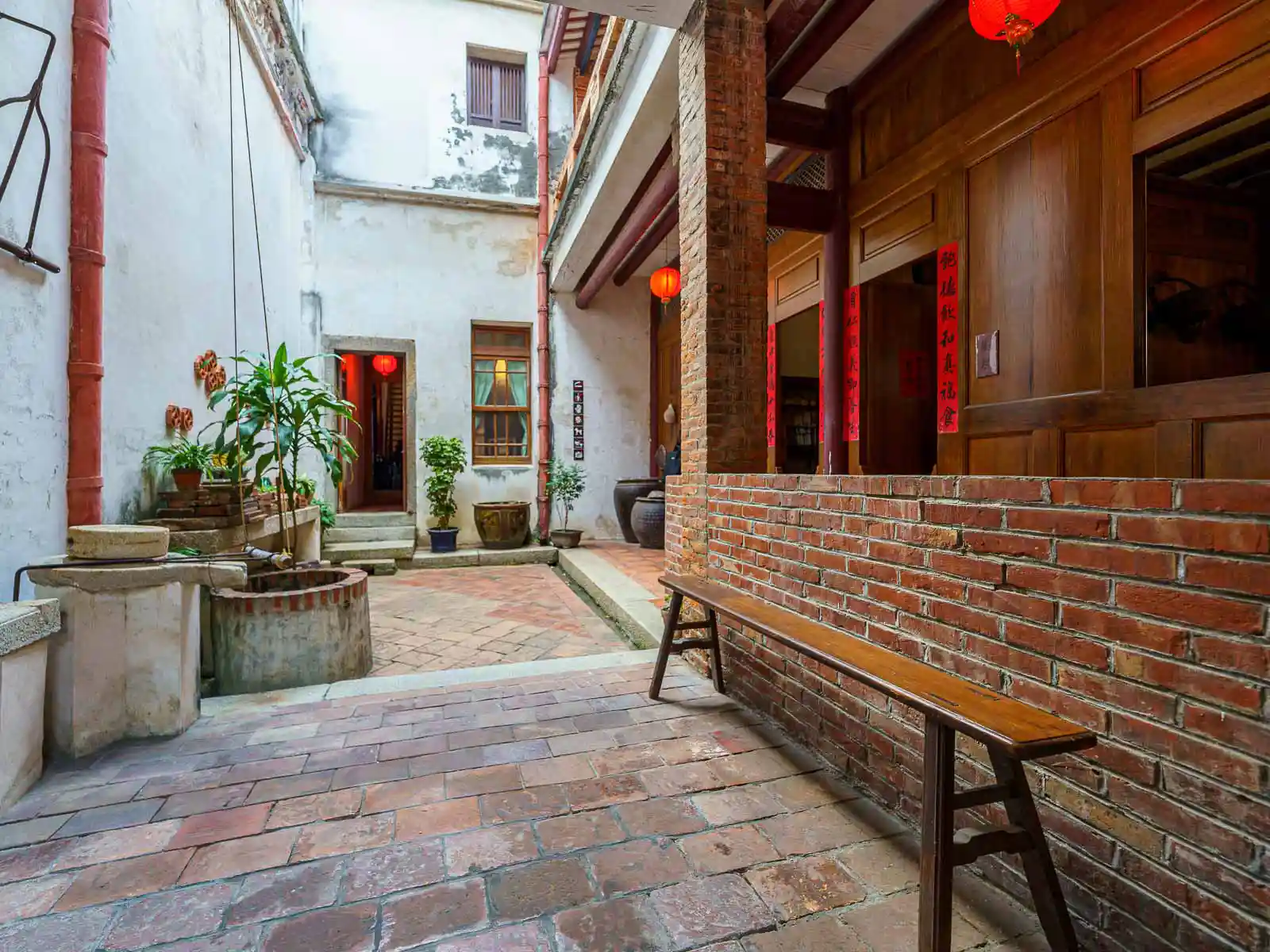
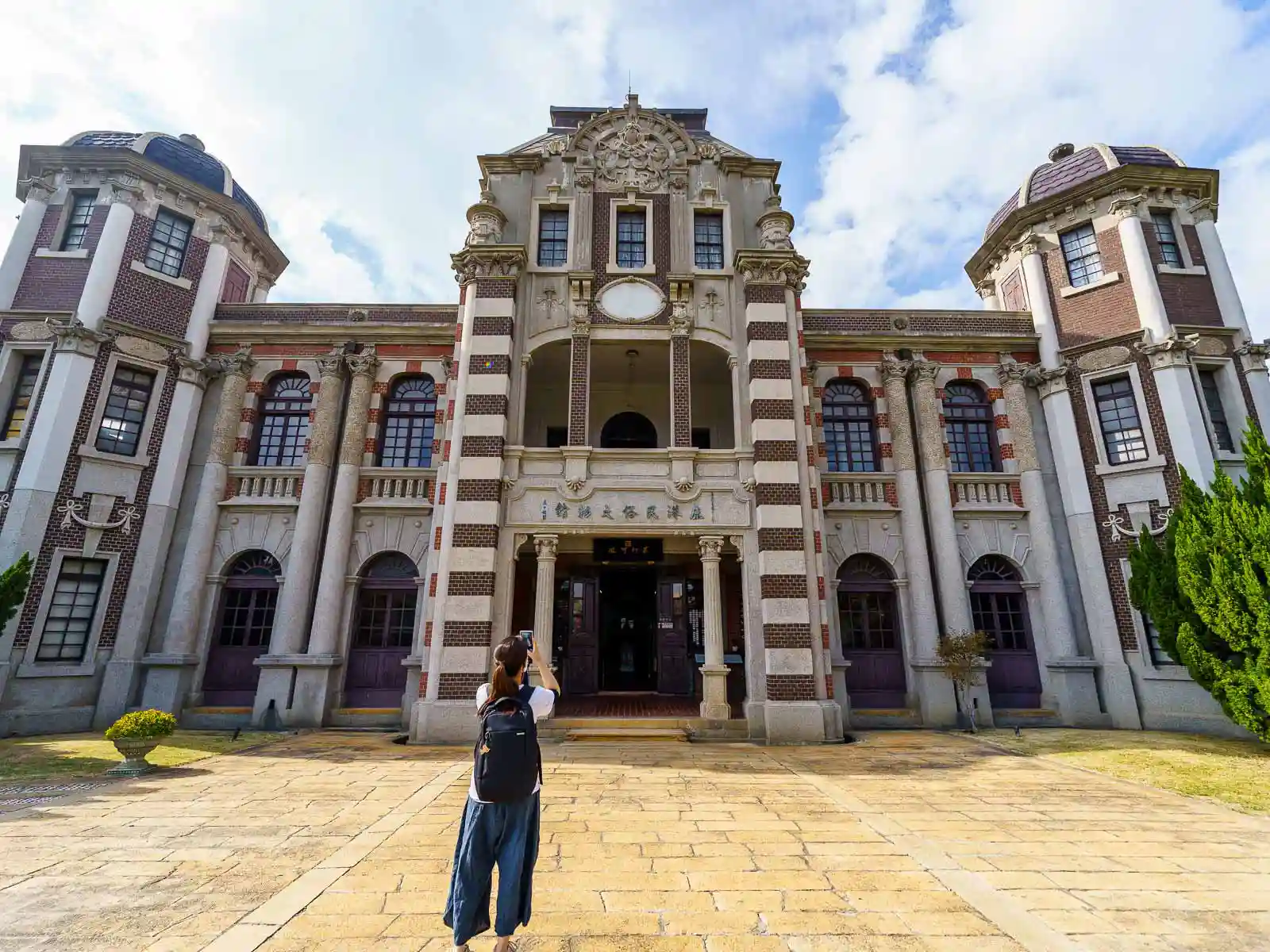
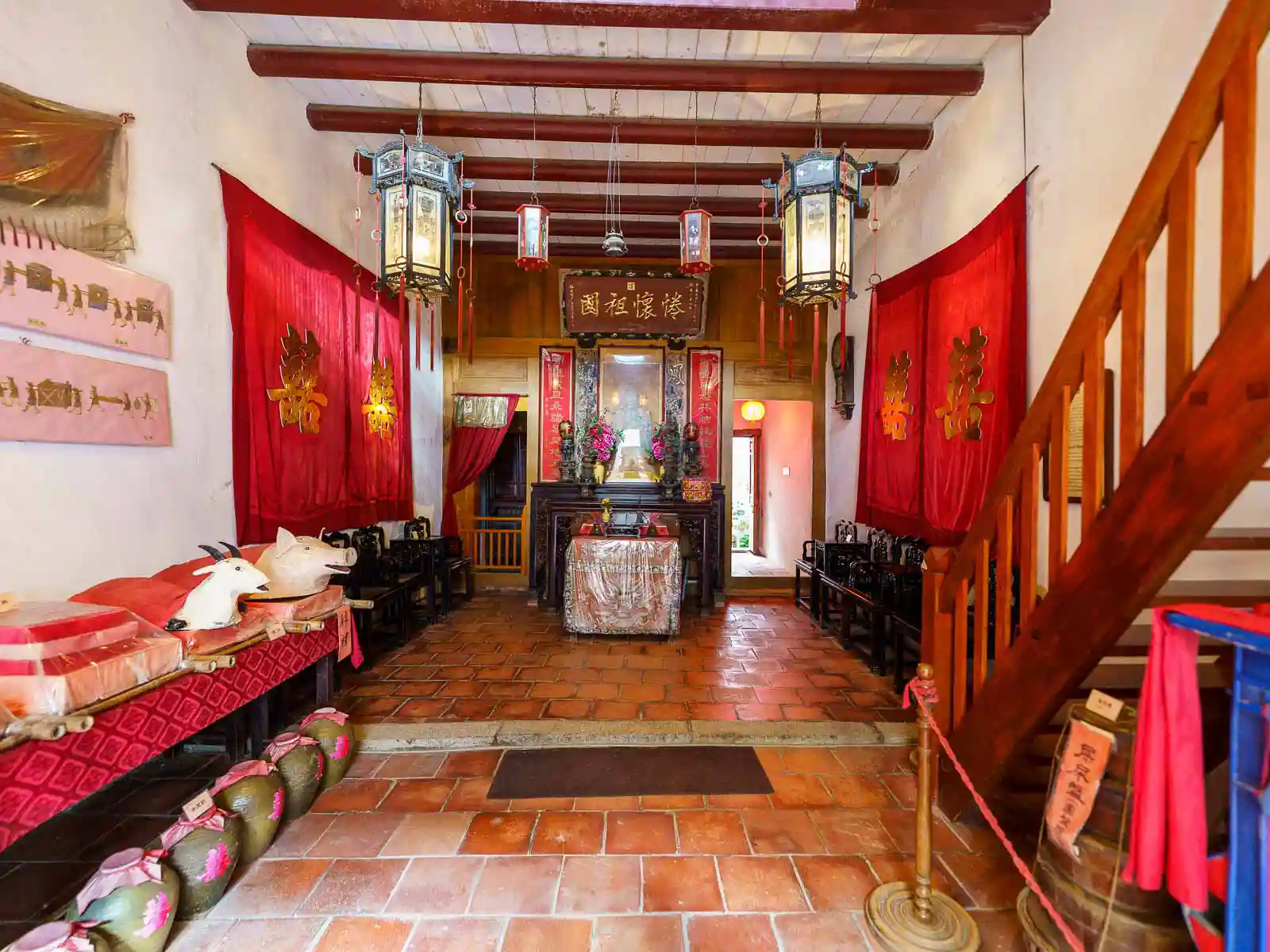
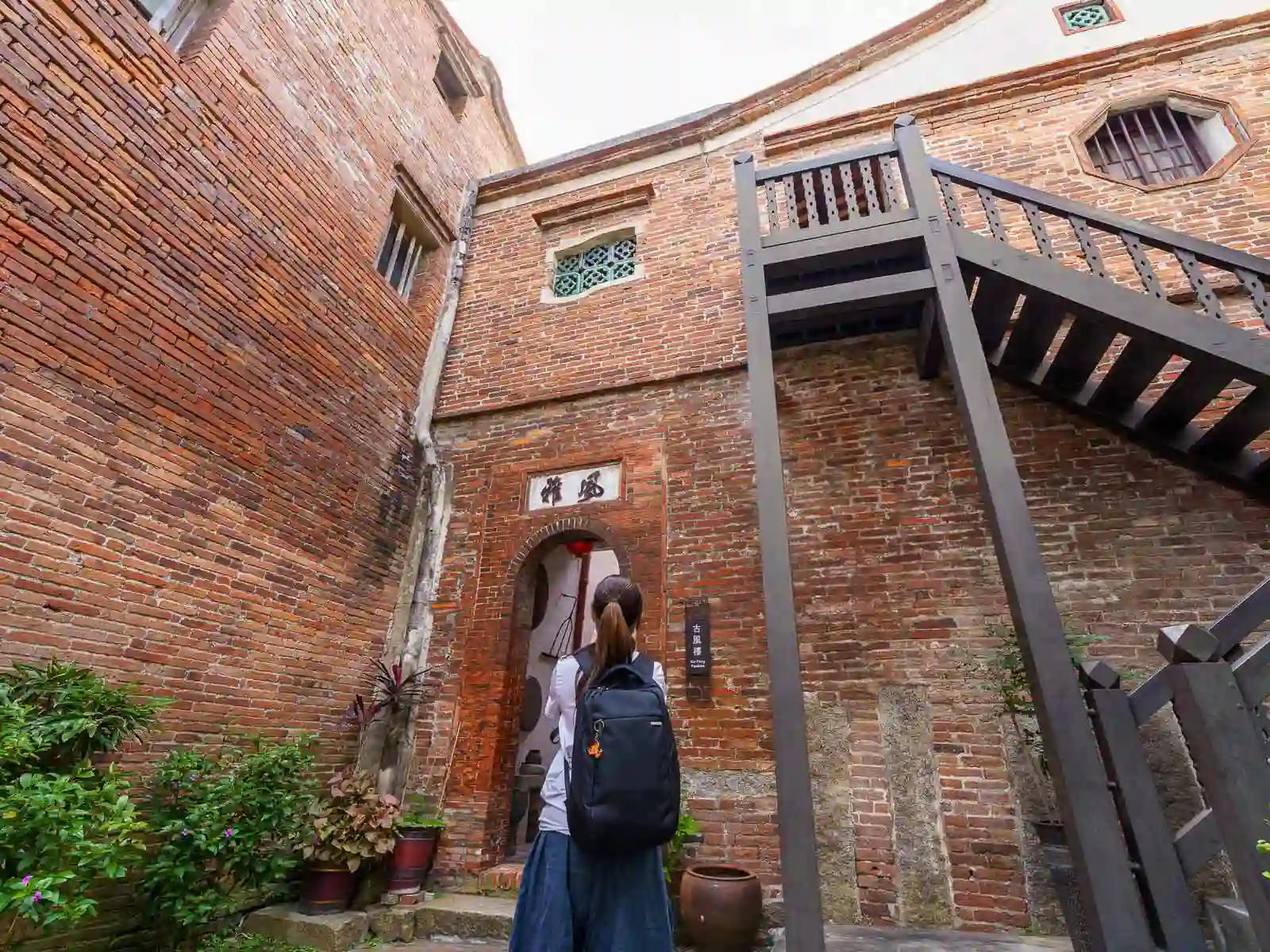
The Lukang Folk Arts Museum is a must-see “time capsule” that is, like most points of interest in Lukang, within walking distance of Lukang Old Street. Housed in a restored Japanese-era baroque-inspired building, the museum recreates the living spaces of late 19th century Taiwanese bourgeoisie. Courtyards, bedrooms, and parlor areas are filled with antique furniture and artifacts from as far back as the Ming and Qing dynasties. Exhibitions on display include photographs, calligraphy, lacquer ware, porcelain, carved stones, embroidery, musical instruments and other items. Some of the wood carvings and porcelain on display were made years ago by Lukang’s own artisans. Like the town in which it’s located, the museum features many interesting courtyards and passages which visitors can explore at their own pace.
Lukang Ting’s Family Historical Residence (Old House Of The Ding’s, Lukang)
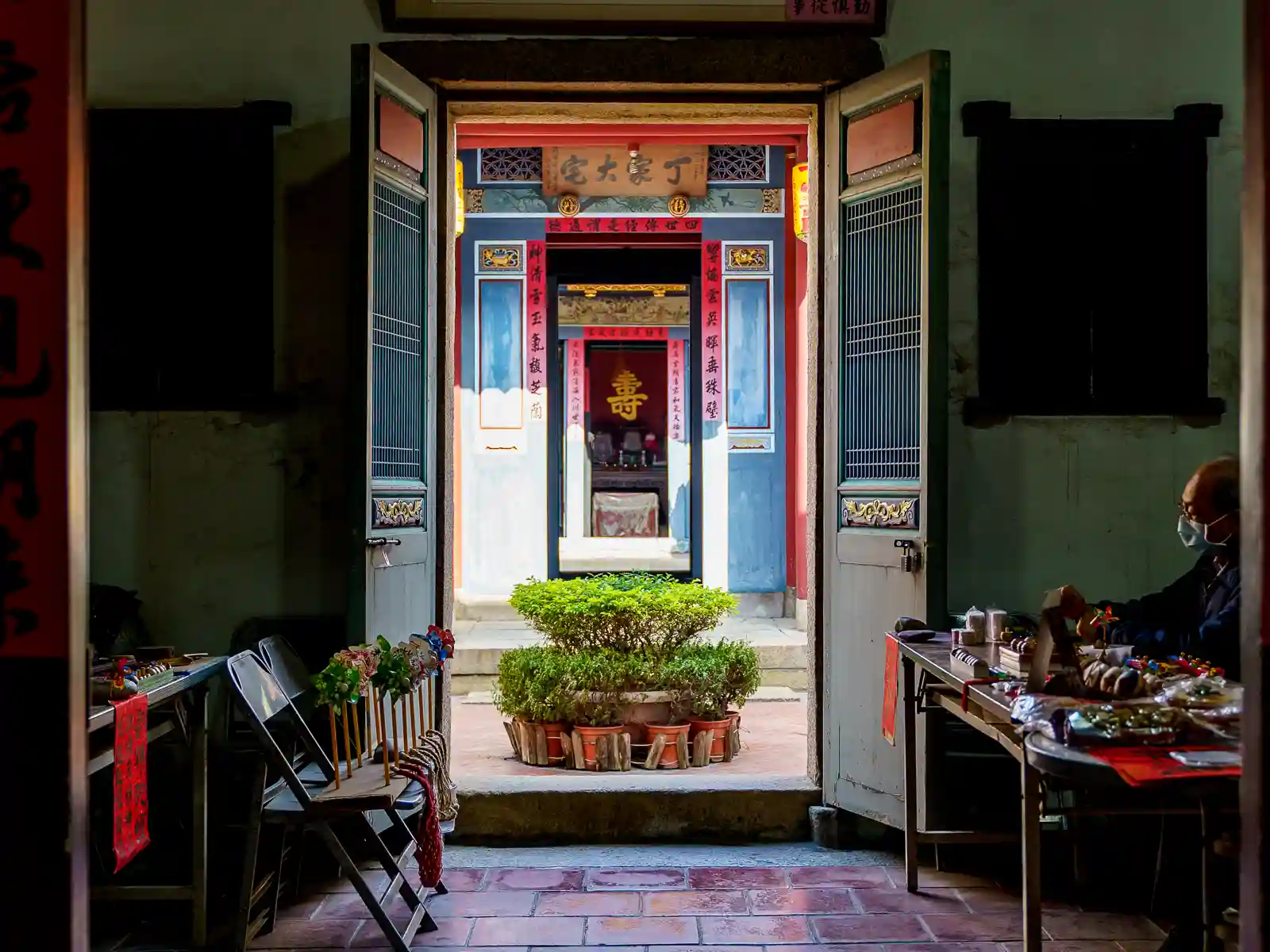
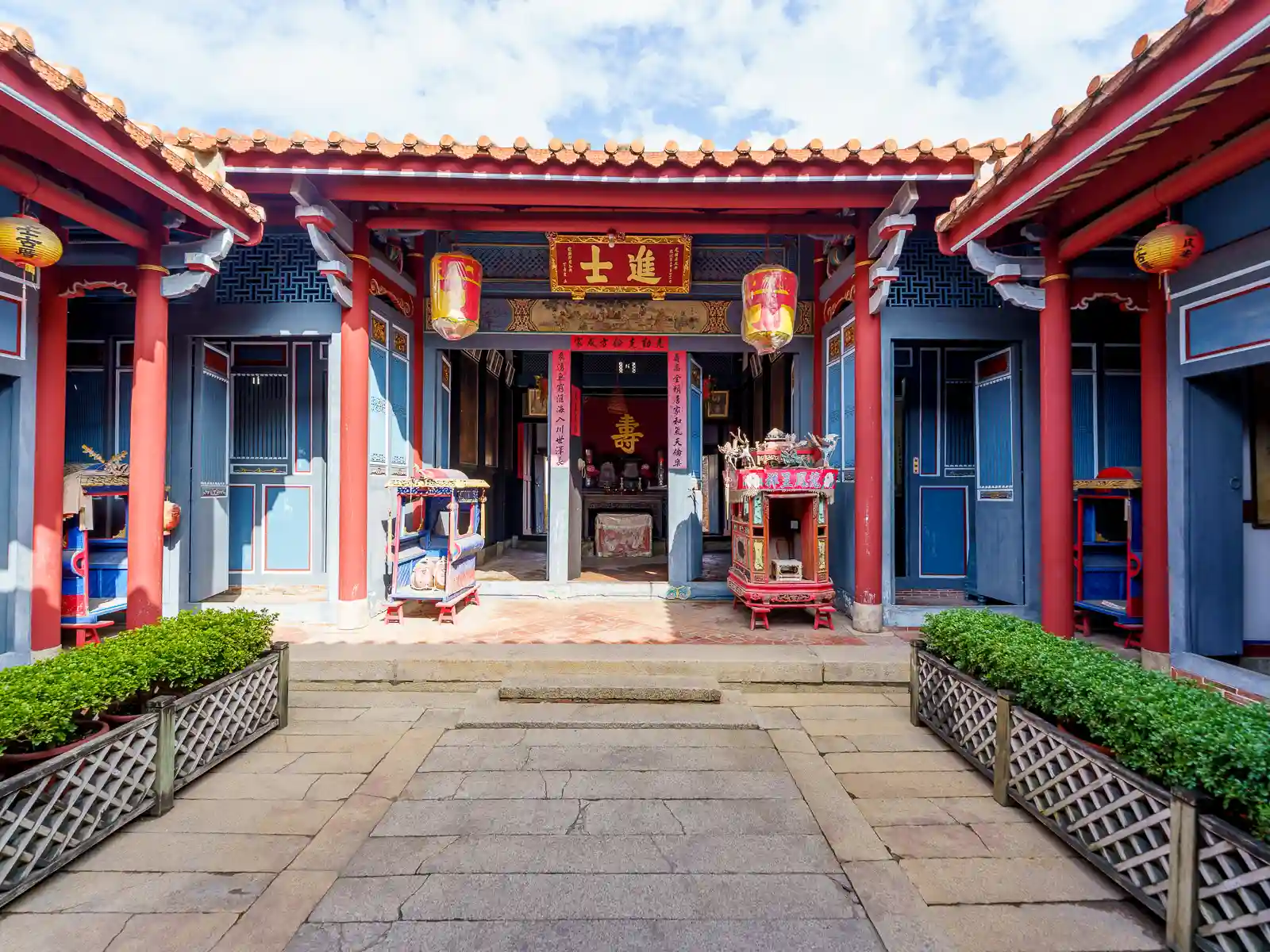
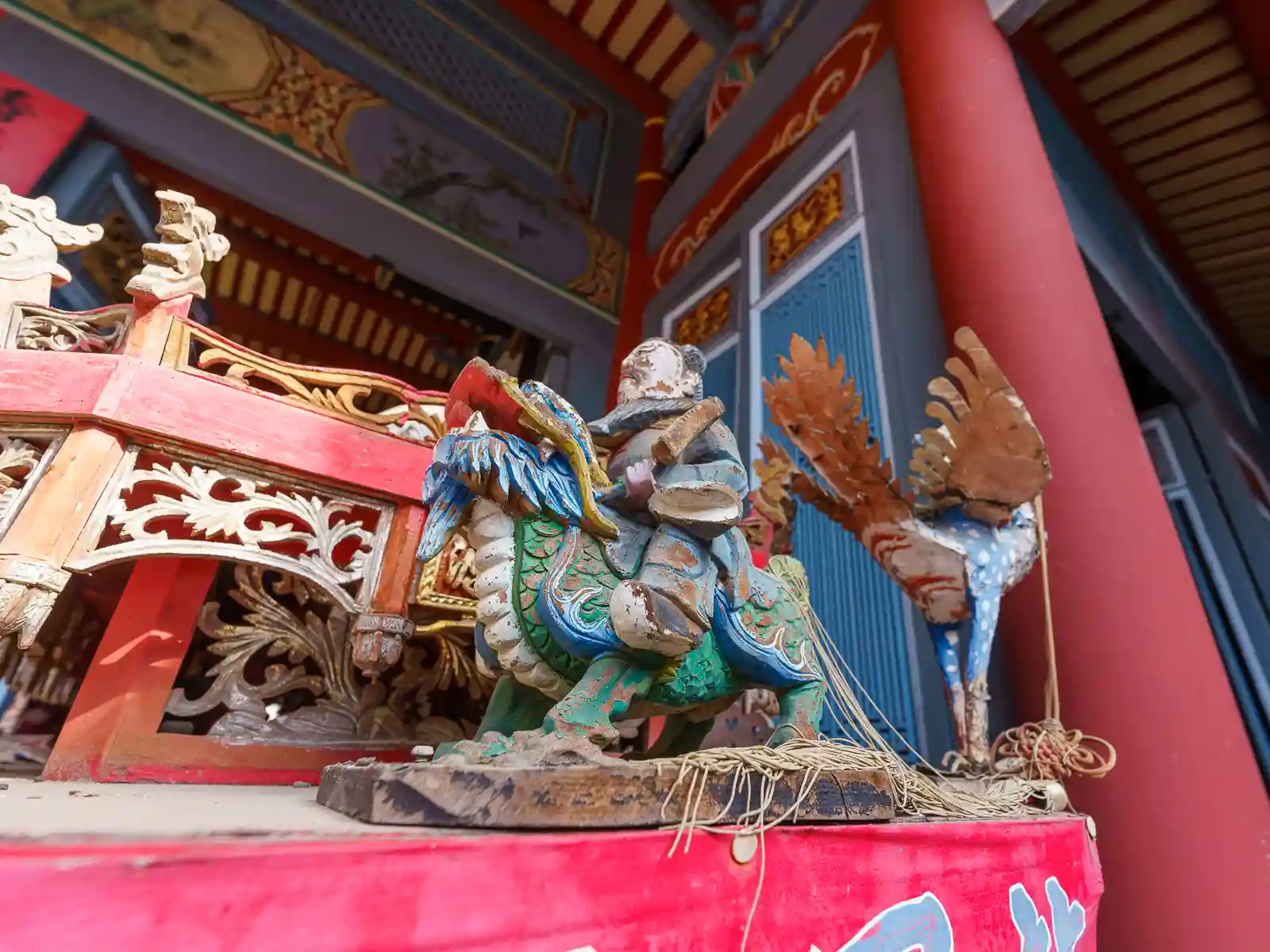
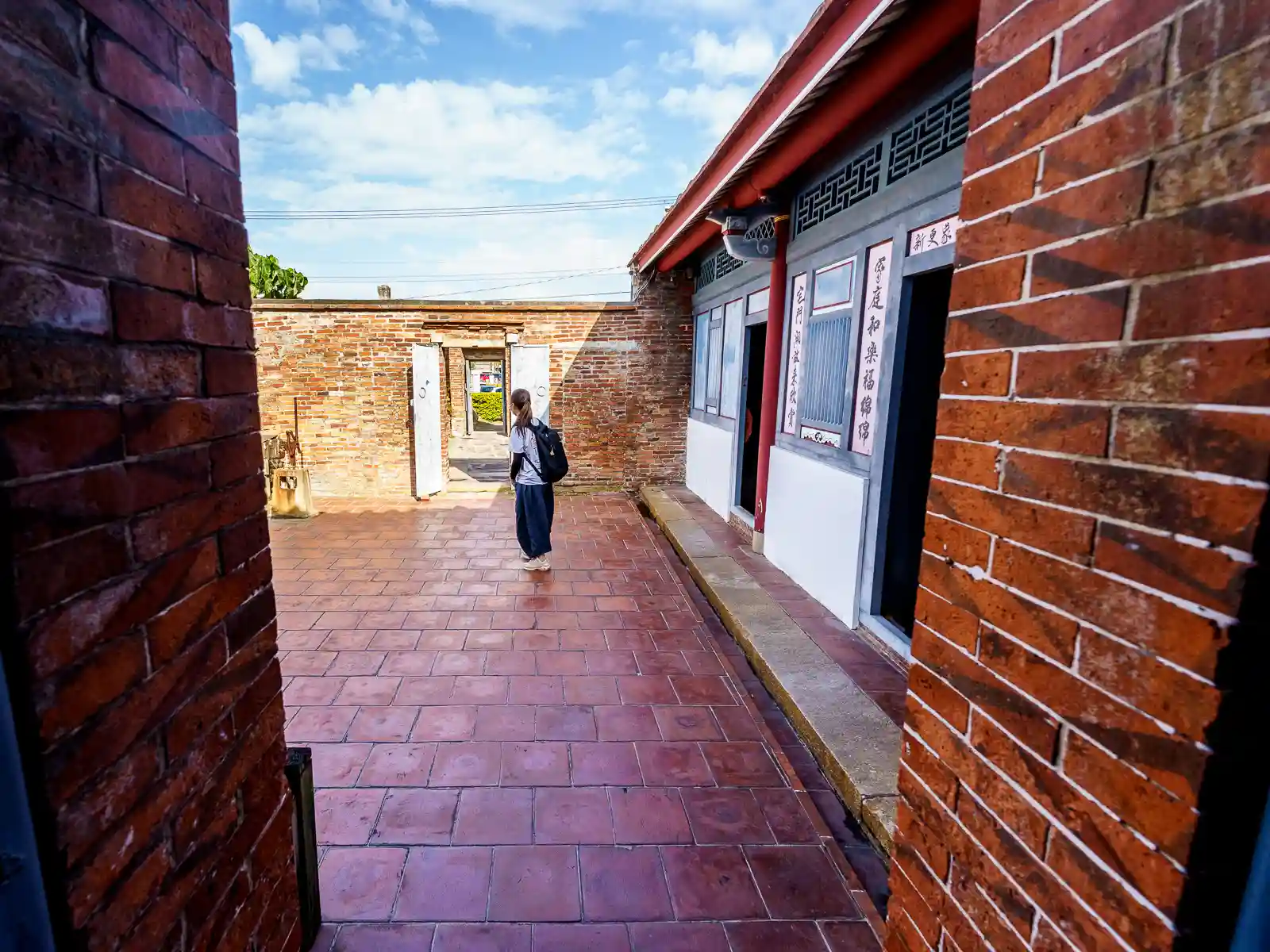
Located just next door to the Lukang Folk Arts Museum is another wonderful relic of Lukang’s glorious past and county monument: Ting’s Family Historical Residence (also referred to as “Ancient House of Ding’s Family”).
The Ting’s Family Historical Residence features a “three-section, three-front, two-courtyard” architectural layout, making it one of the few well-preserved buildings in Lukang with an intact layout, and the last remaining example in Taiwan of a Qing Dynasty three-shop-front with an interior courtyard. The unique complex stretches 70-meters deep, which creates opportunities for creative photography.
The commercial area has since been repurposed to showcase the art of local artists, while deeper inside the residence, original architecture, art and personal possessions like palanquins are on display for guests to enjoy. The house features painted wooden screens that are the works of Lukang’s master painter Guo Youmei.
Lukang Longshan Temple
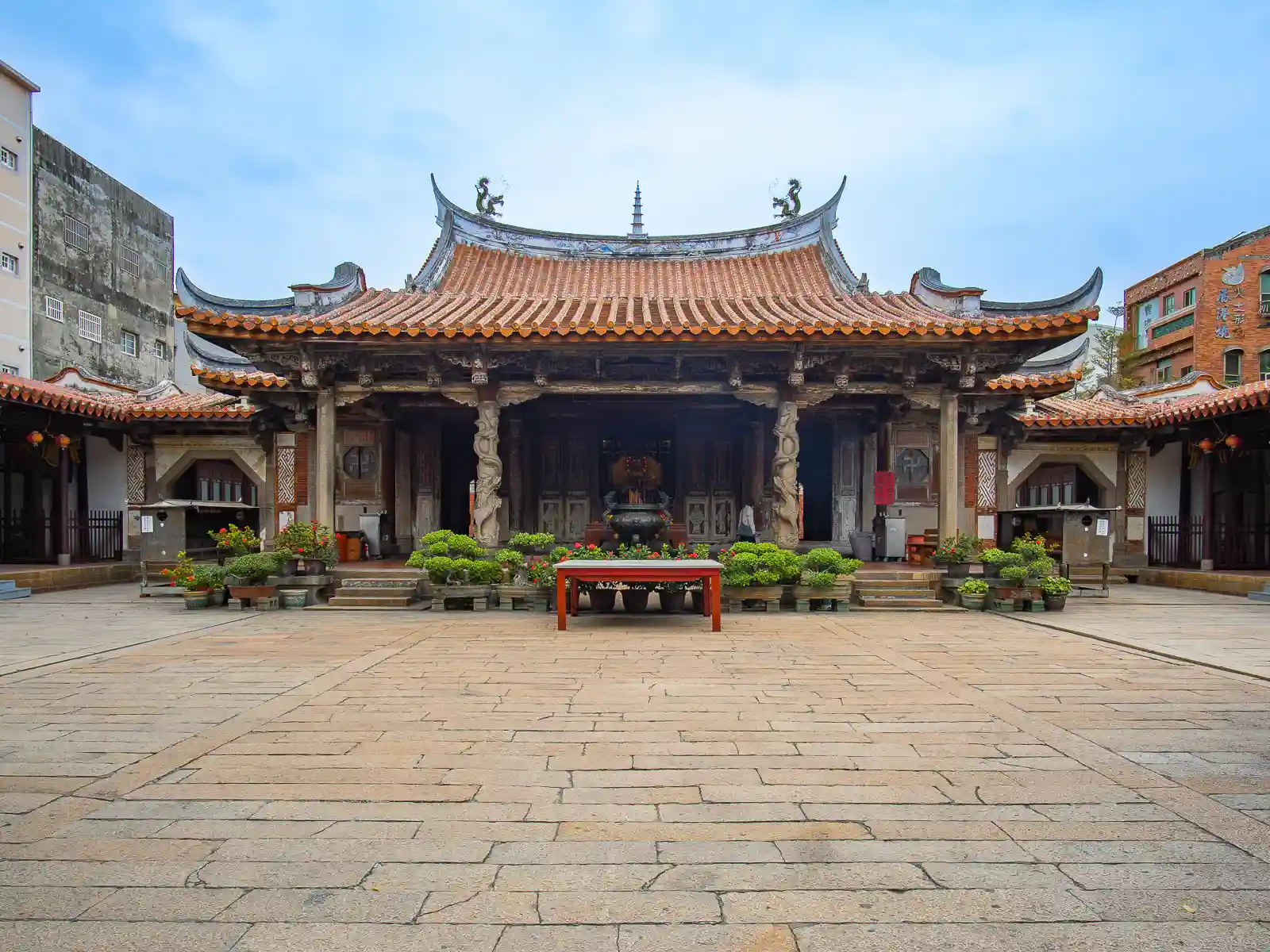
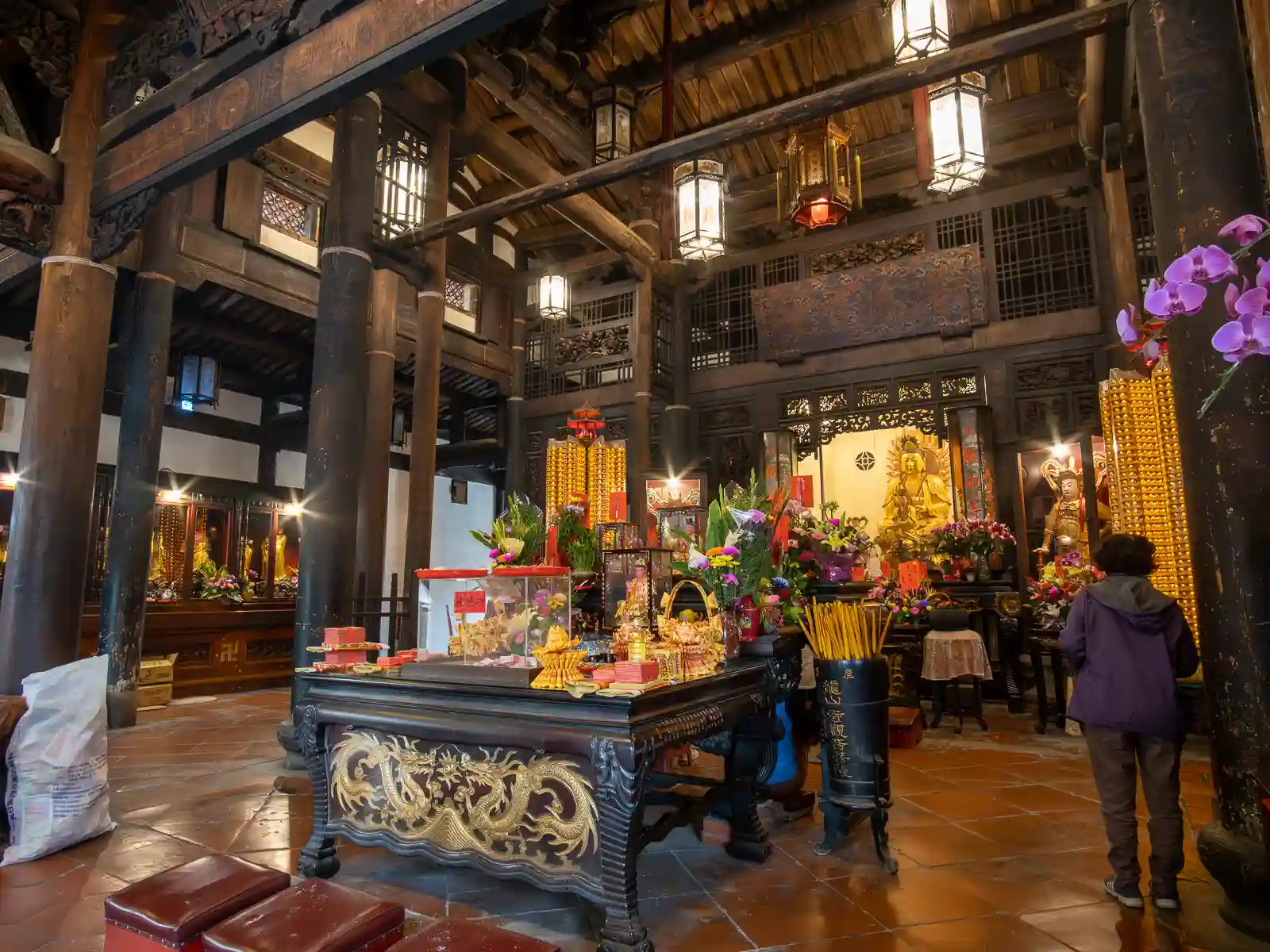
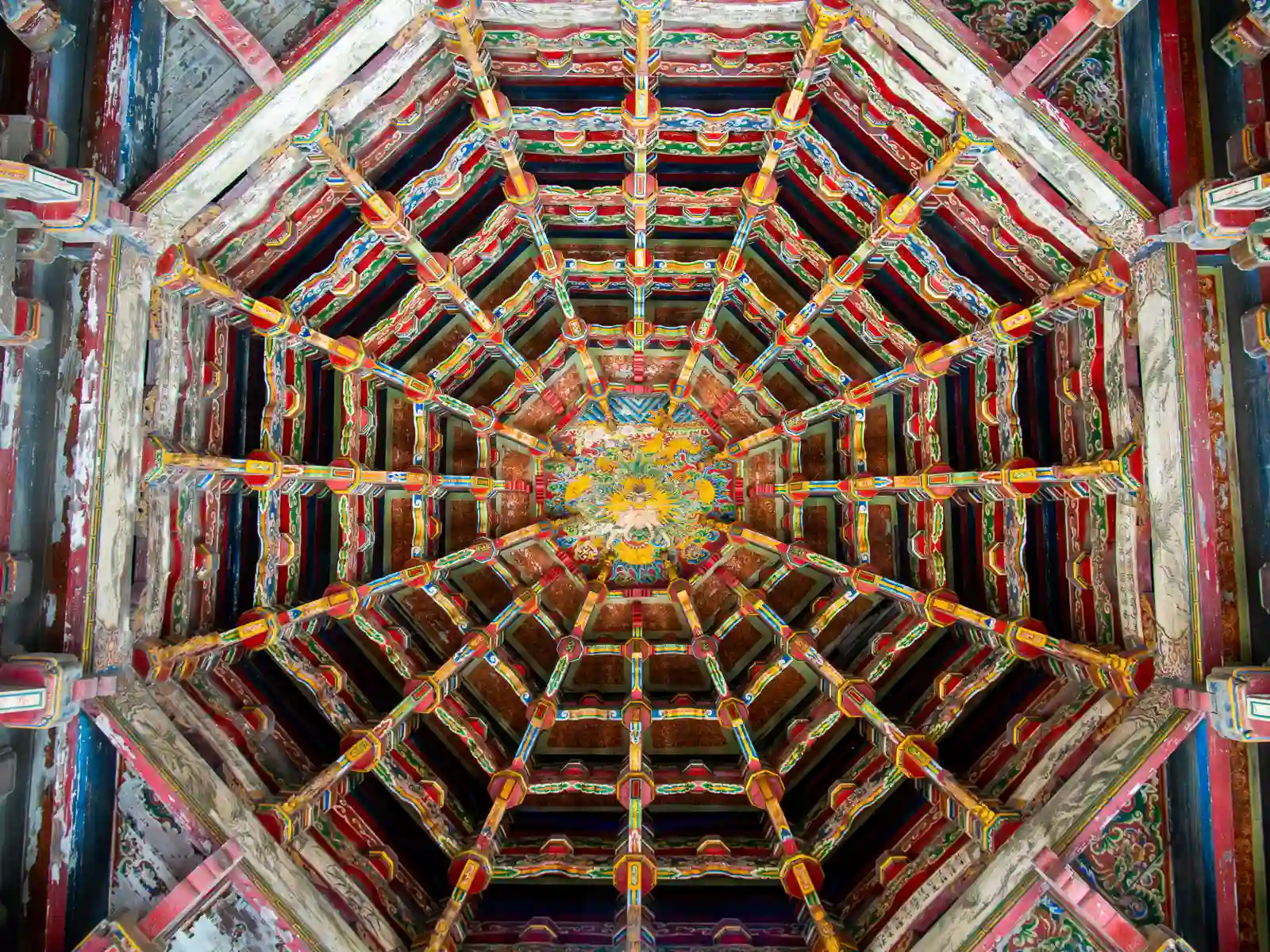
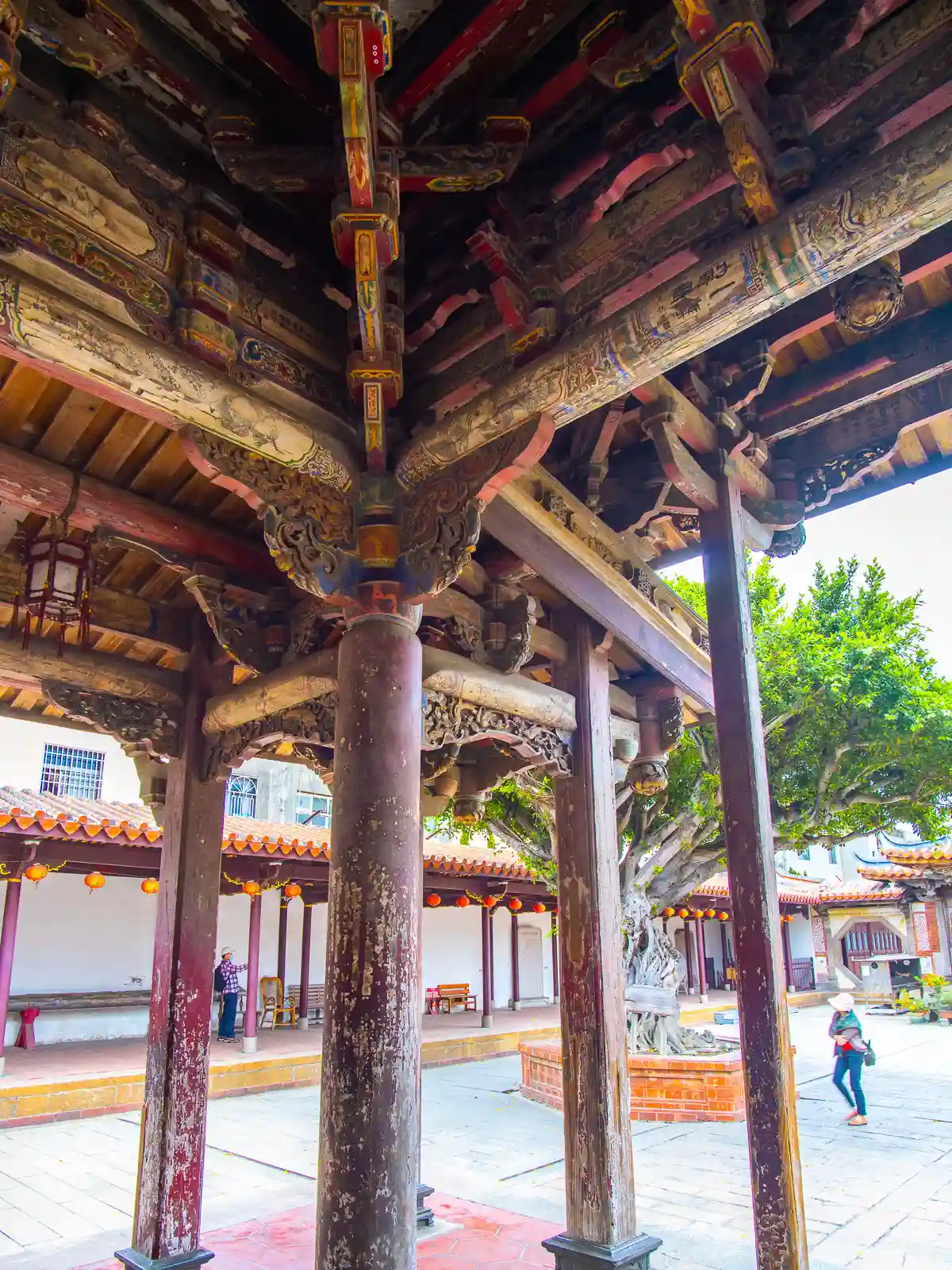
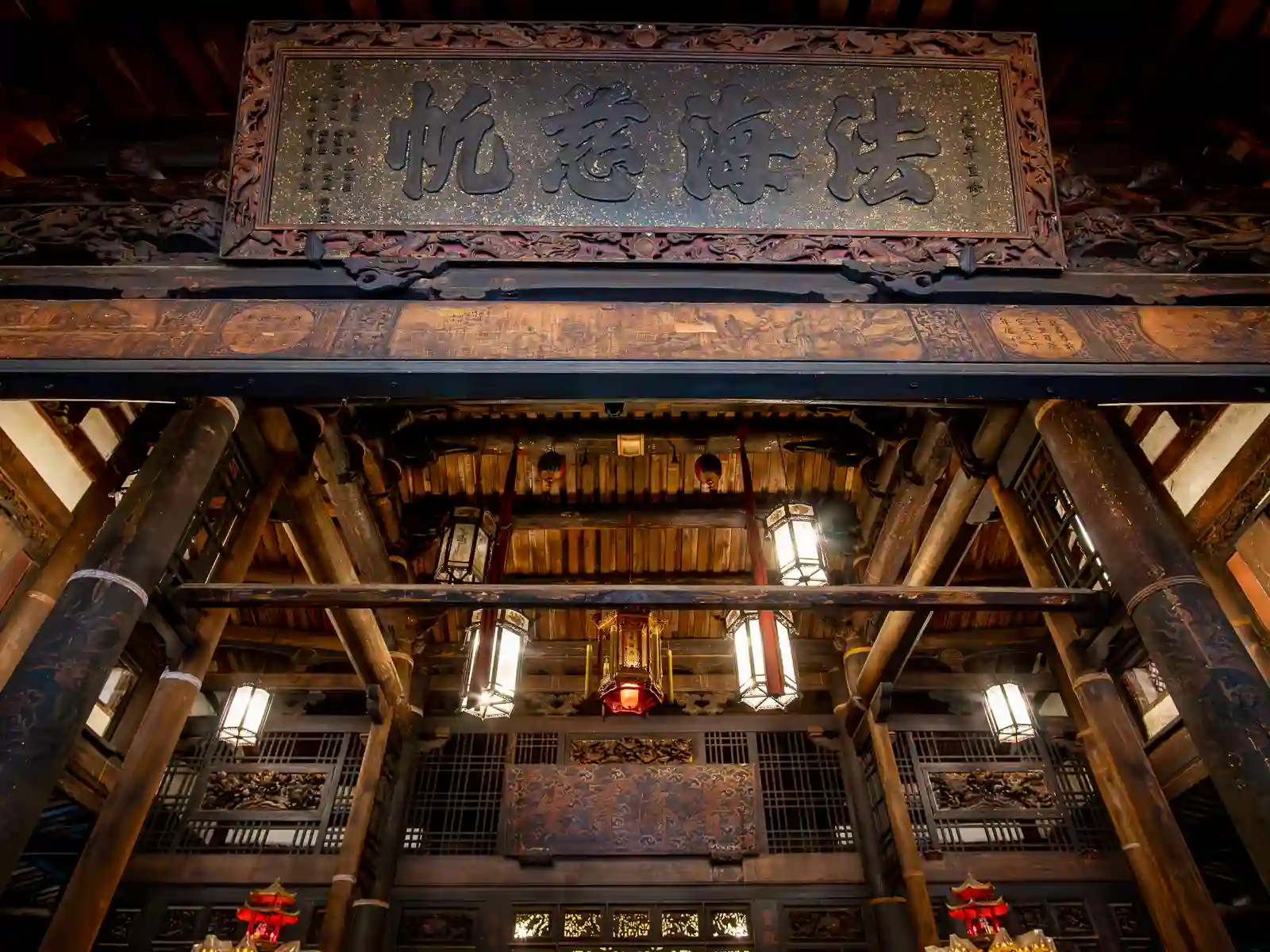
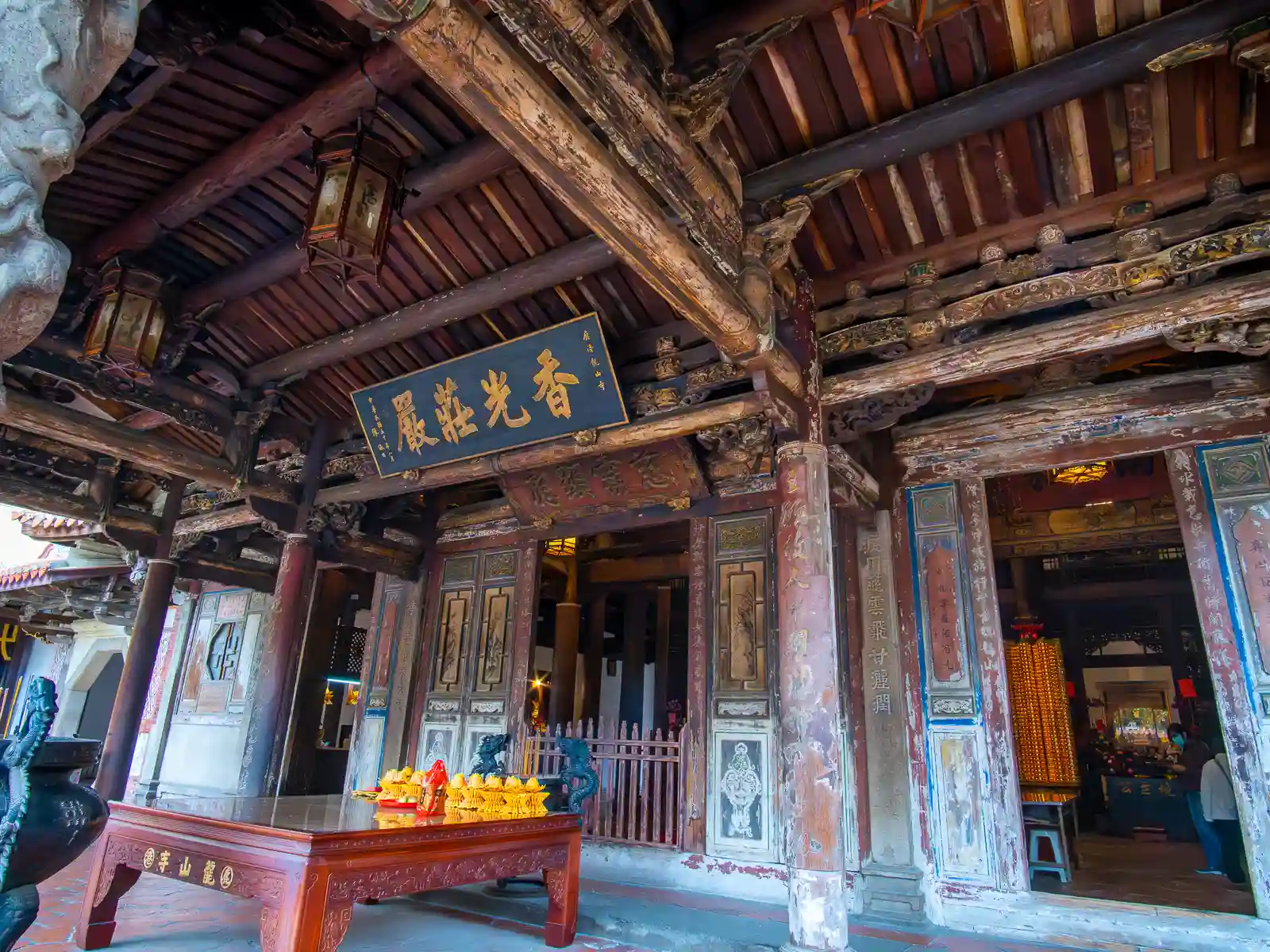
Known as both the “Forbidden City of Taiwan” and the “Art Palace of Taiwan”, Lukang Longshan Temple is Lukang’s largest temple, and one of the most important religious sites in the country. The temple has been awarded national monument status in order to preserve Taiwan’s cultural heritage; it is filled with beautiful stone sculptures, wood carvings, hand paintings and many more artworks.
The temple was built in 1786 by early Han Chinese settlers to thank Guanyin, the Goddess of Mercy, for their safe passage across the dangerous waters of the Taiwan Strait. It has been renovated several times since then and has been declared by The Taiwan Tourism Bureau as Taiwan’s best-preserved and most aesthetically alluring Qing-dynasty architectural work.
The walled complex of the temple features four aligned courtyards, each more elaborate than the next. The temple is also home to one of Taiwan’s most elaborate spiderweb caisson ceilings, a classic engineering technique which features carved and painted wooden pieces joined together with interlocking wooden brackets instead of nails.
Husheng Glass Temple
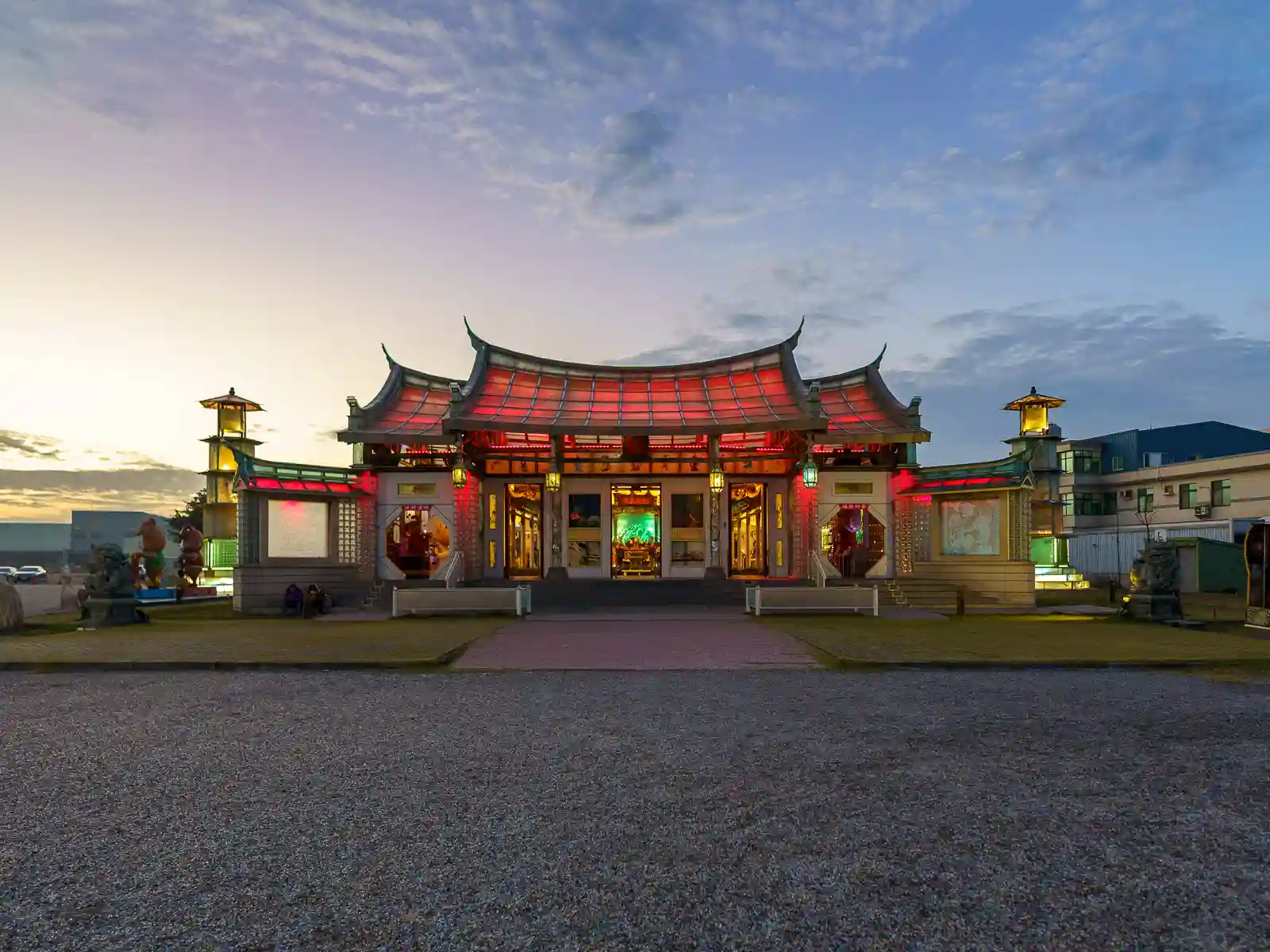
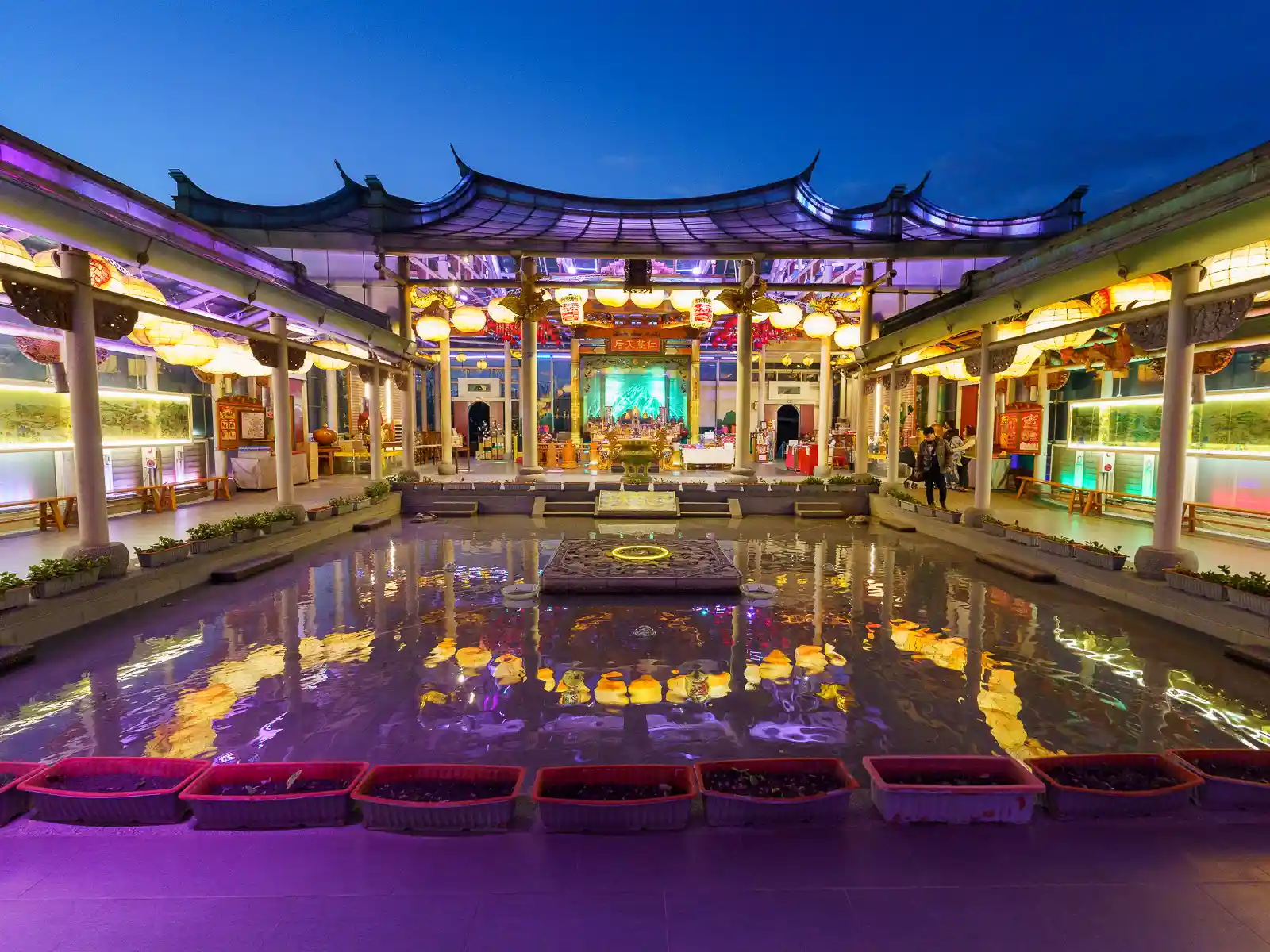
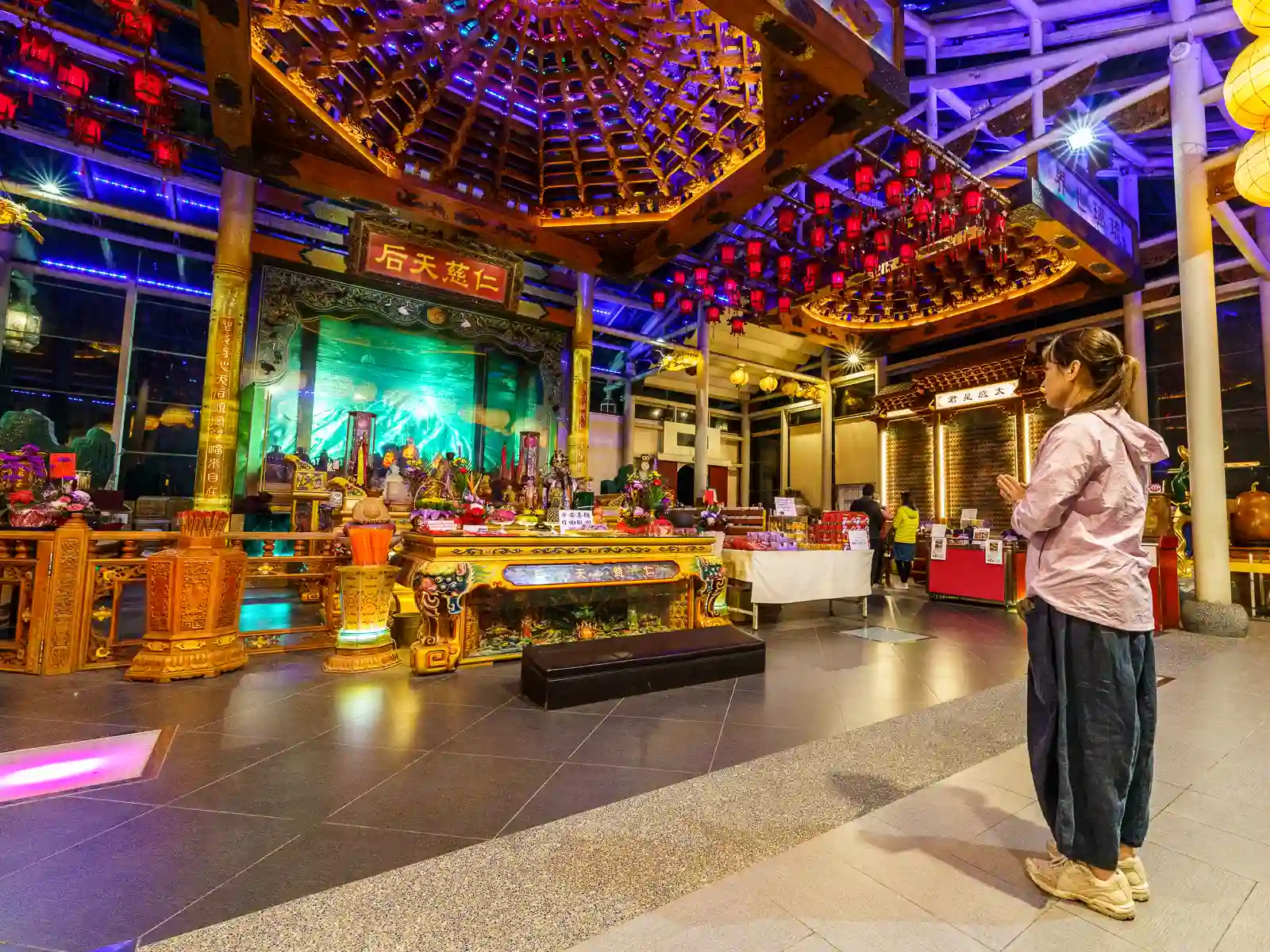
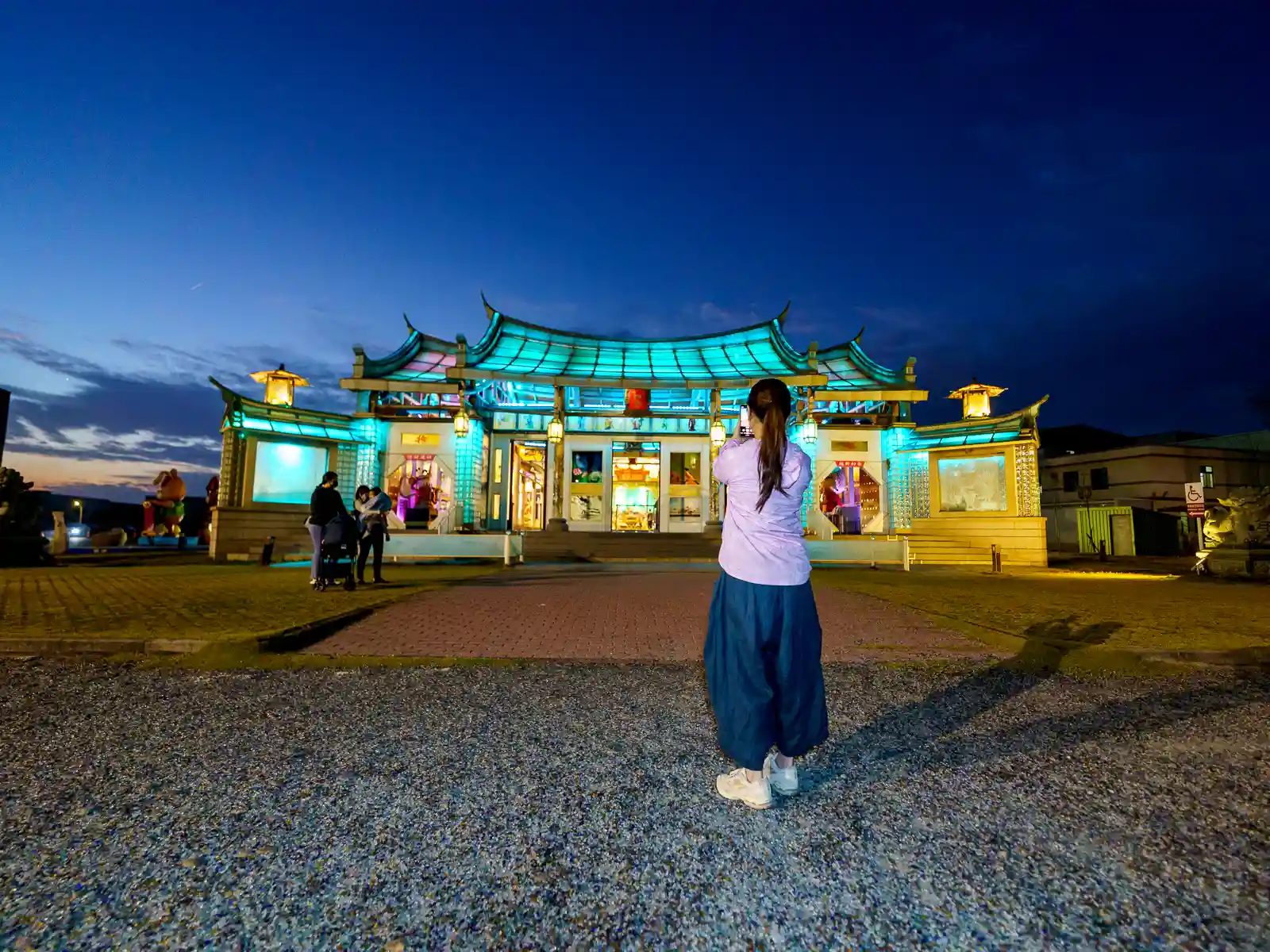
The Husheng Glass Temple, located just outside of the Town of Lukang, is a modern take on Taiwanese tradition. Made entirely out of glass panels fixed together with glass clamps and without the use of any screws whatsoever, it is the first temple of its kind in the world.
Although the temple was only constructed in 2012, it worships one of Taiwan’s most important traditional gods, Mazu, and is modeled after various traditional Mazu temples. During the day, the temple’s appearance varies with ambient light. However, on most evenings, special lights are turned on and the temple really shows off its uniqueness.
We recommend visiting at sunset or in the evening when the temple is illuminated by lights. Be sure to check illumination times by inquiring with the temple as they change by season.
Fangyuan Oyster Harvesting
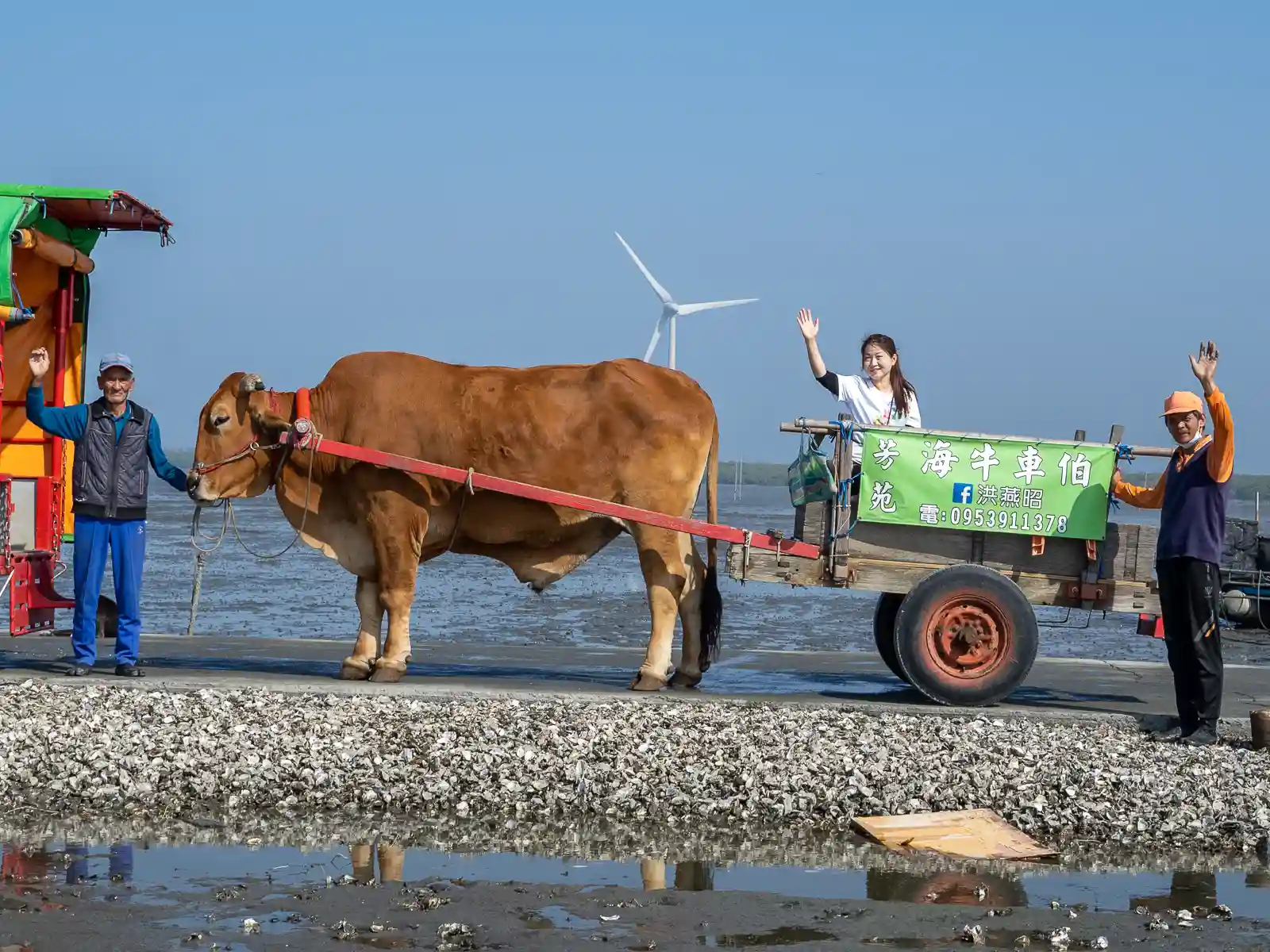
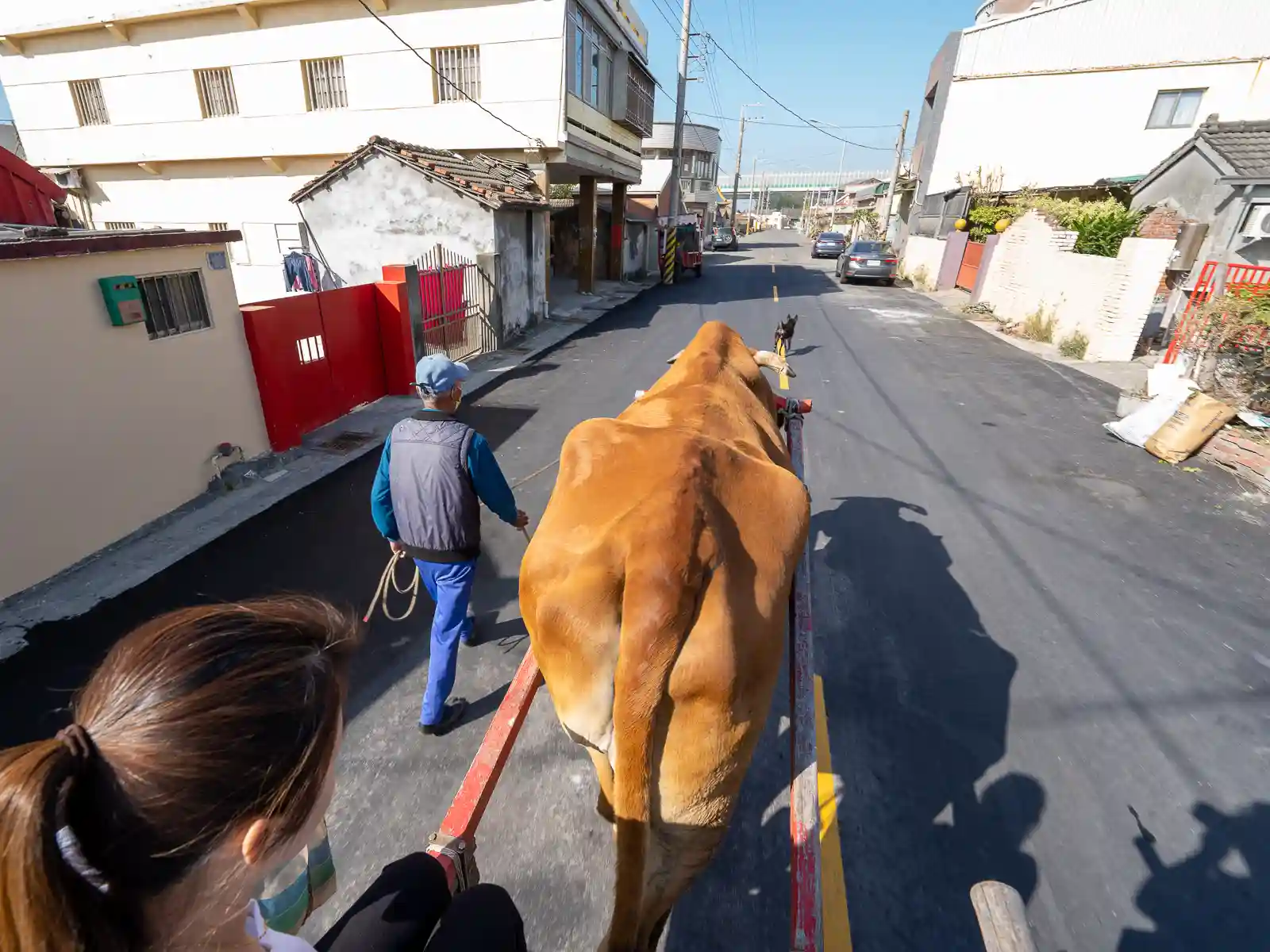
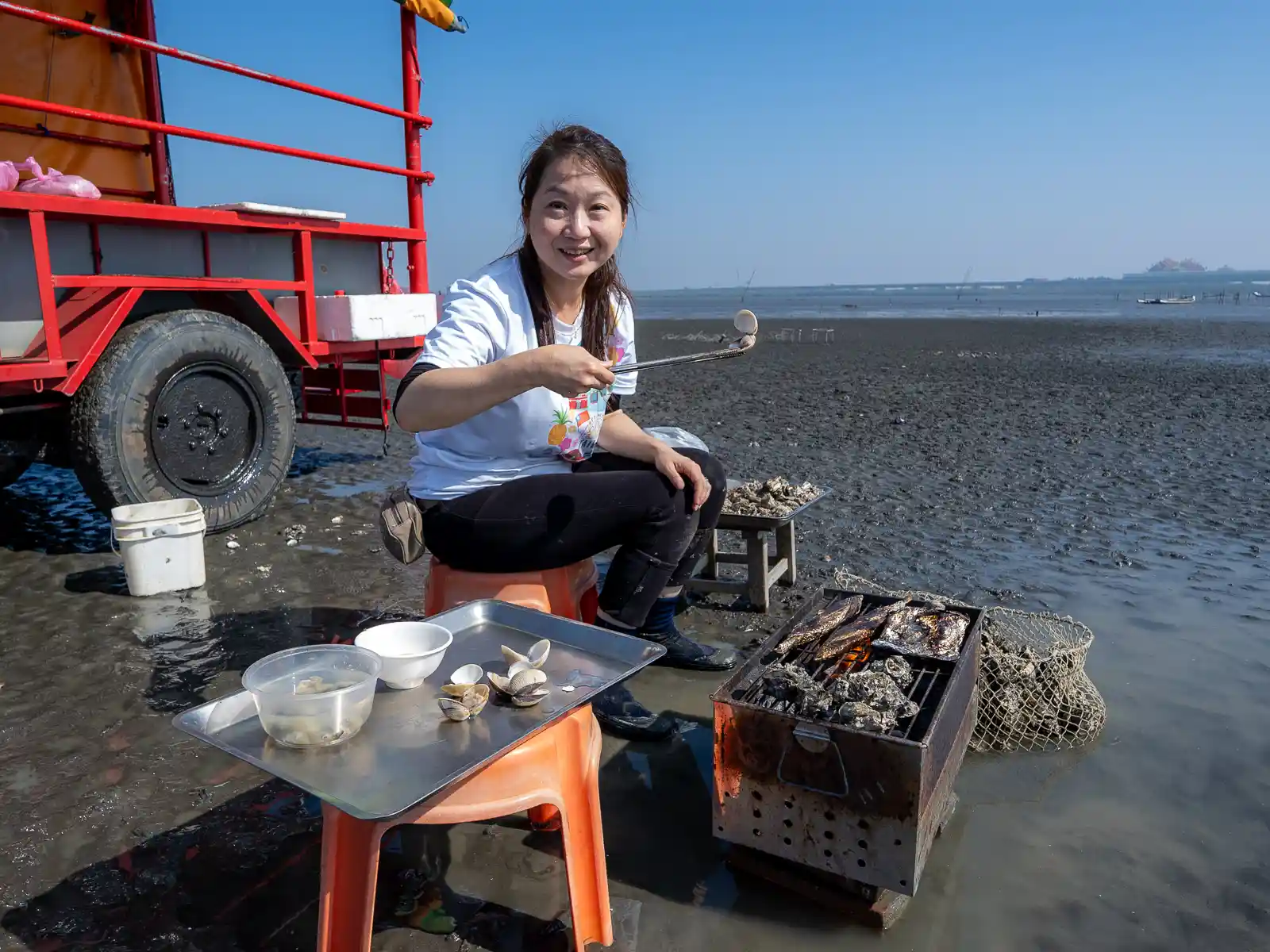
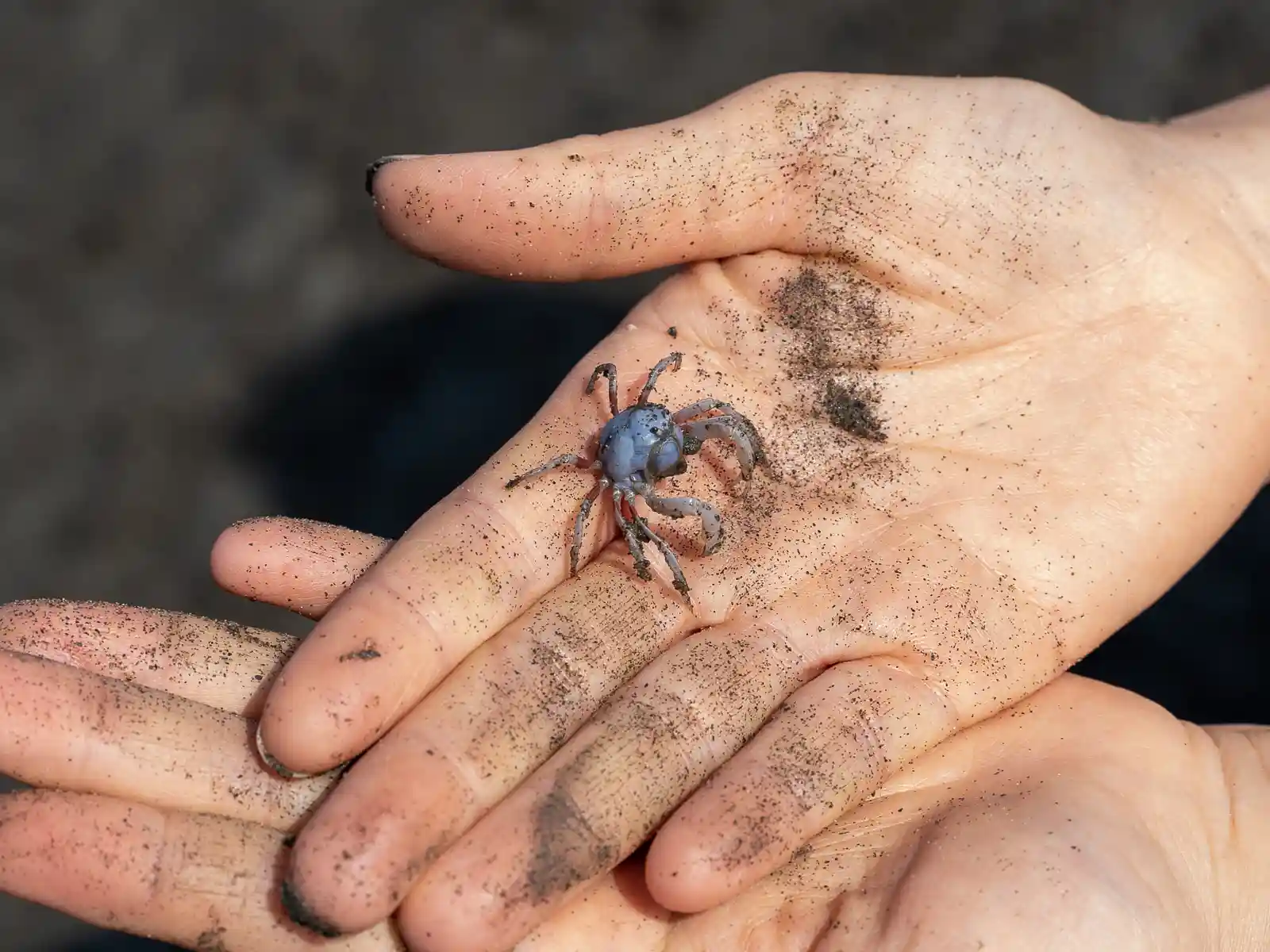
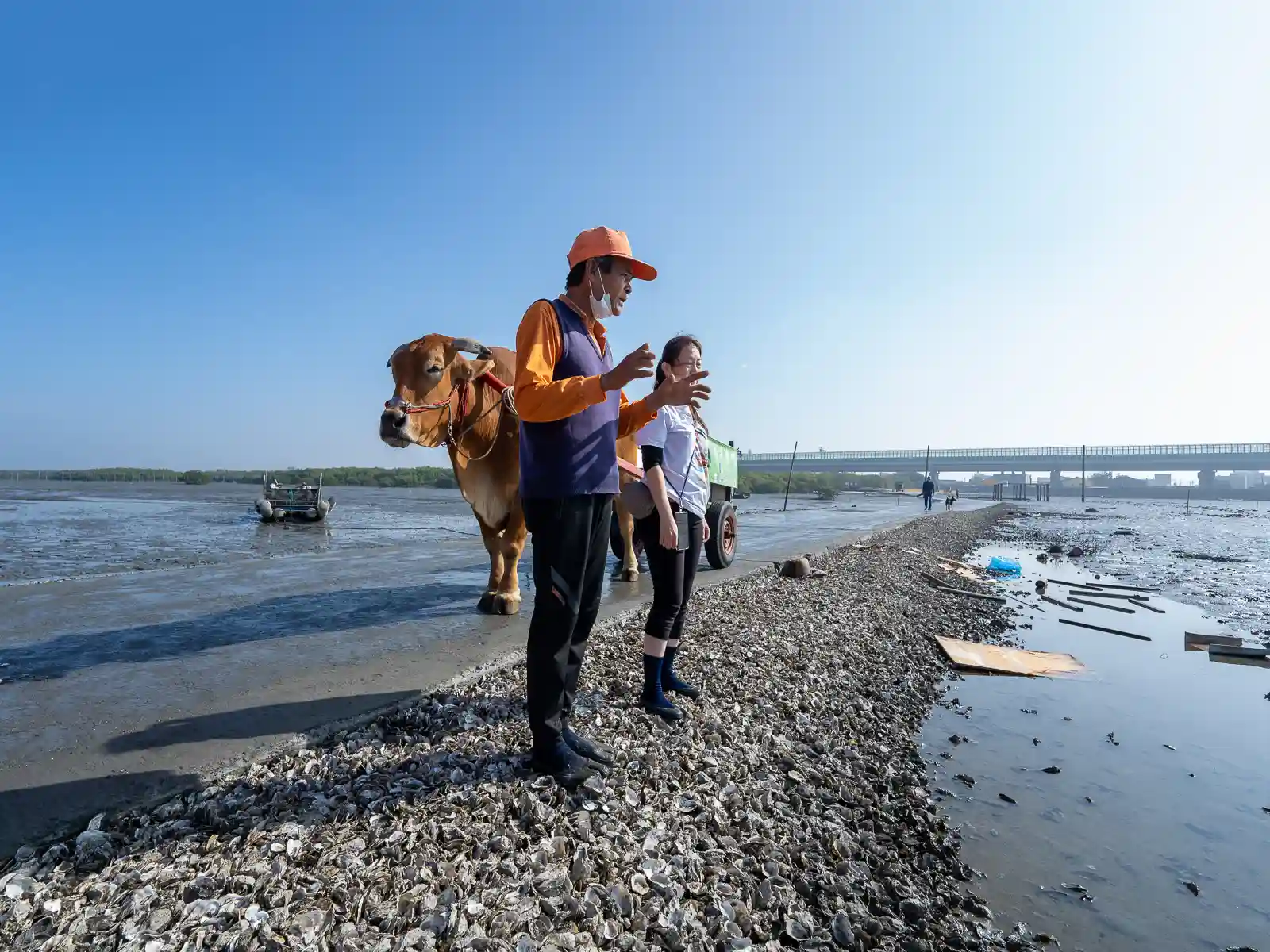
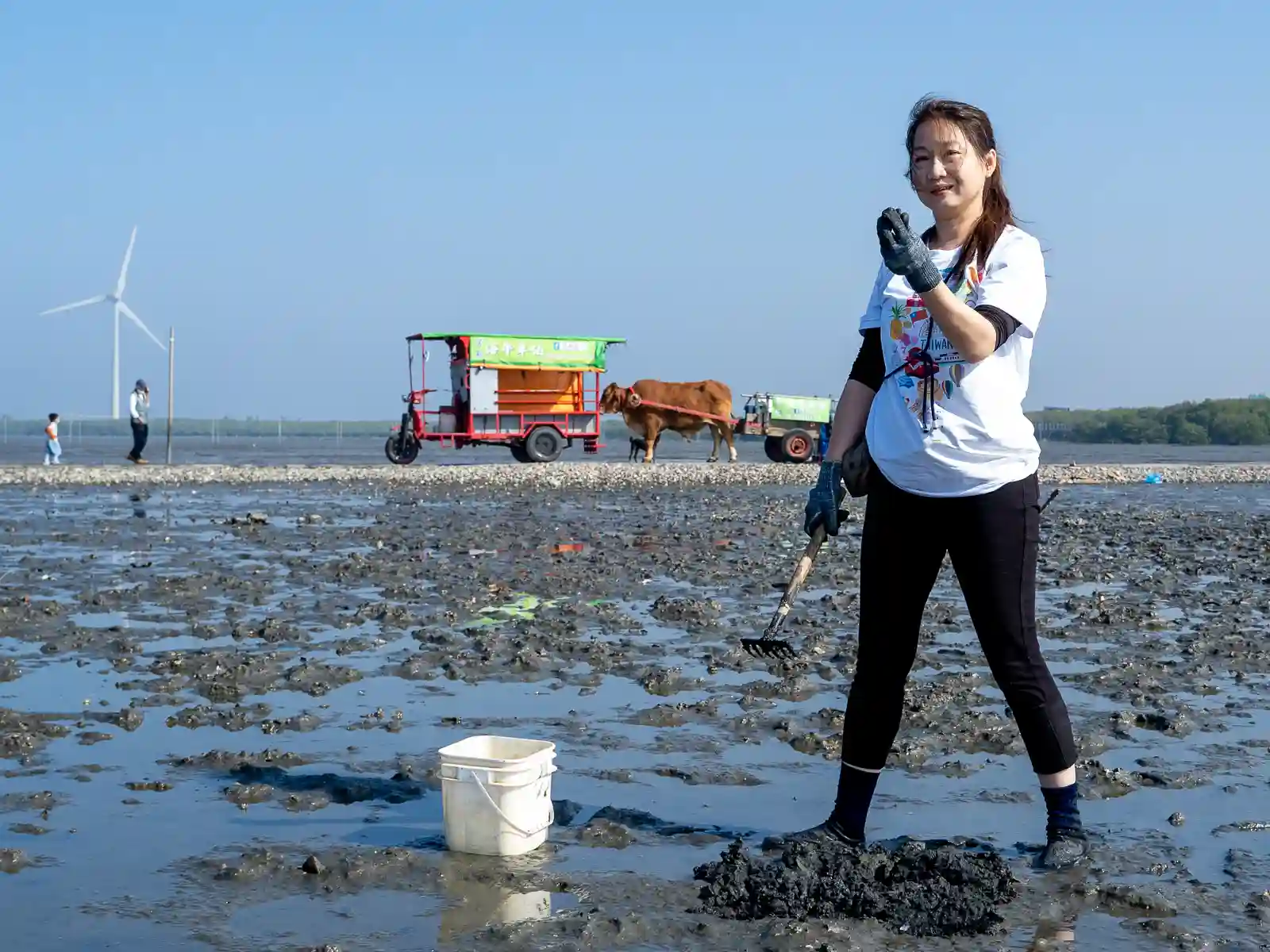
Fangyuan Township, located in Changhua County, has a rich tradition of oyster farming. Its intertidal zones are home to diverse marine life, and provide a unique opportunity for eco-tours. In the past, Fangyuan’s farmers used water buffalo to help them transport harvested oysters into town. While gasoline powered carts have replaced water buffalo for most actual oyster harvesting, the remaining water buffalo are considered a national intangible cultural asset and continue to be an important part of Fangyuan’s cultural heritage.
Capitalizing on the tradition of using water buffalo-pulled carts to transport oysters from the fields, entrepreneurial farmers now offer authentic oyster picking tours that give visitors a chance to experience how oysters were once farmed. Not only will you get to experience the slow pace of life of the local farmers, they will also educate you on the local ecosystem and provide a barbecue on the tidal flats.
Dongzuo’s Inkstone Art Center
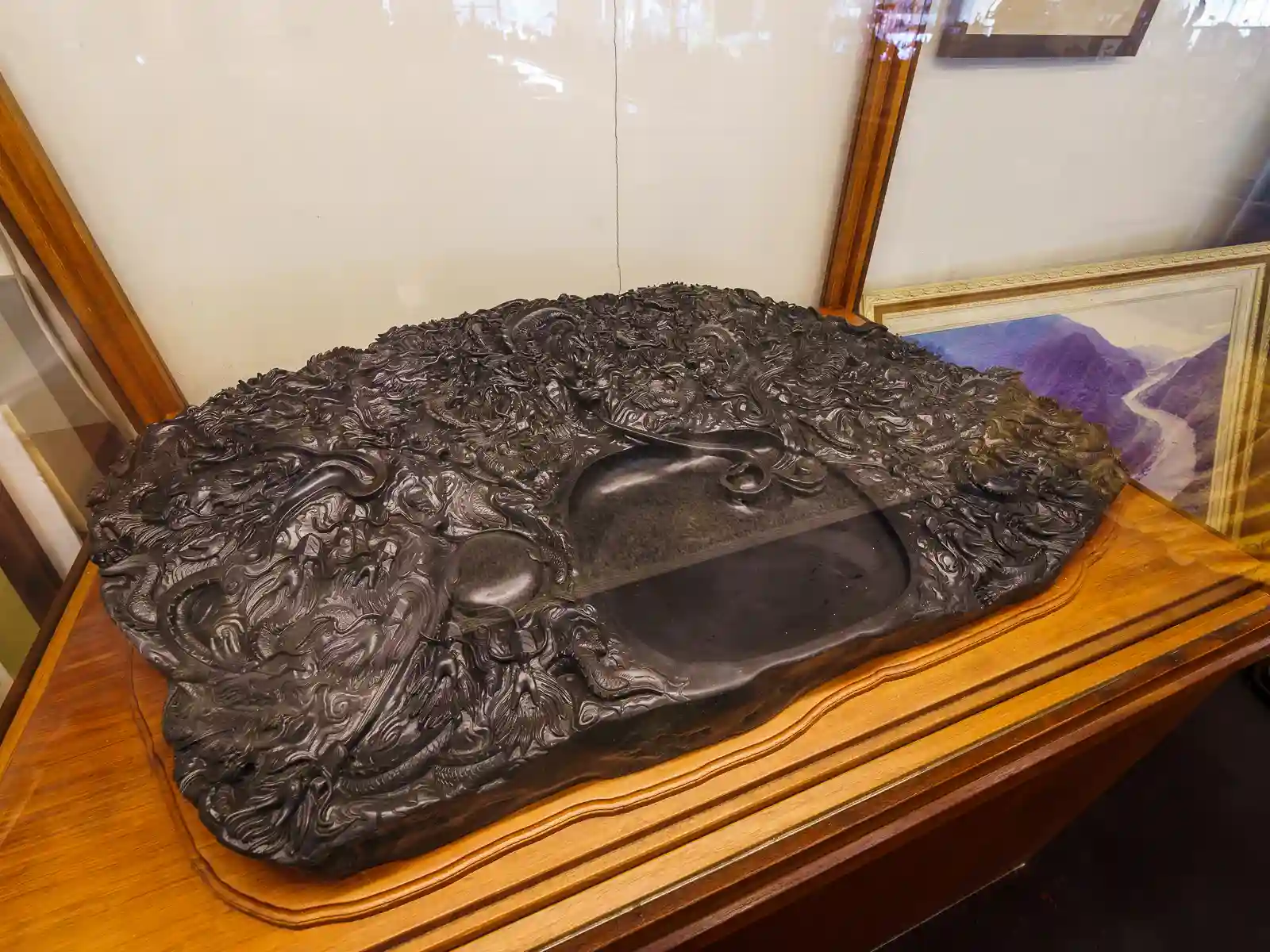
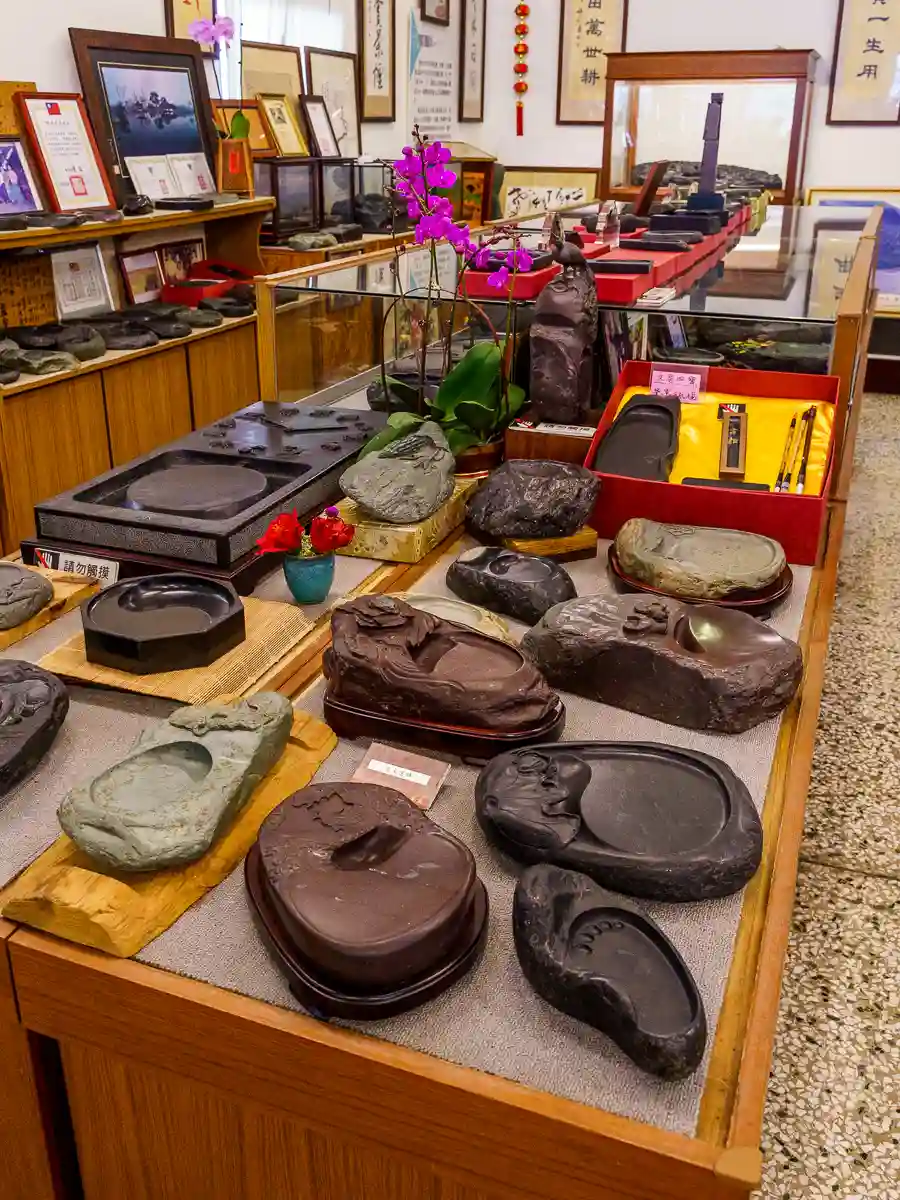
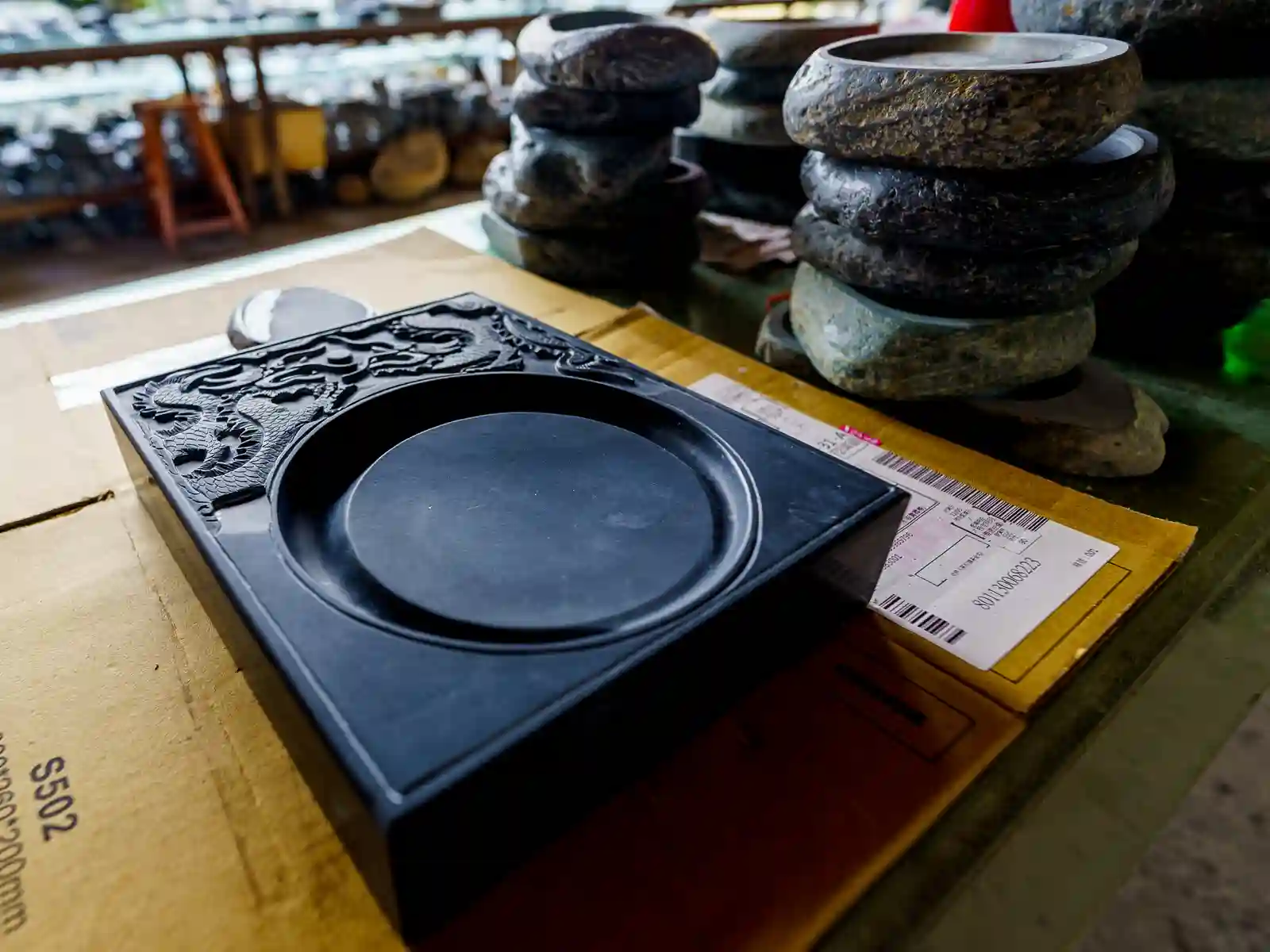
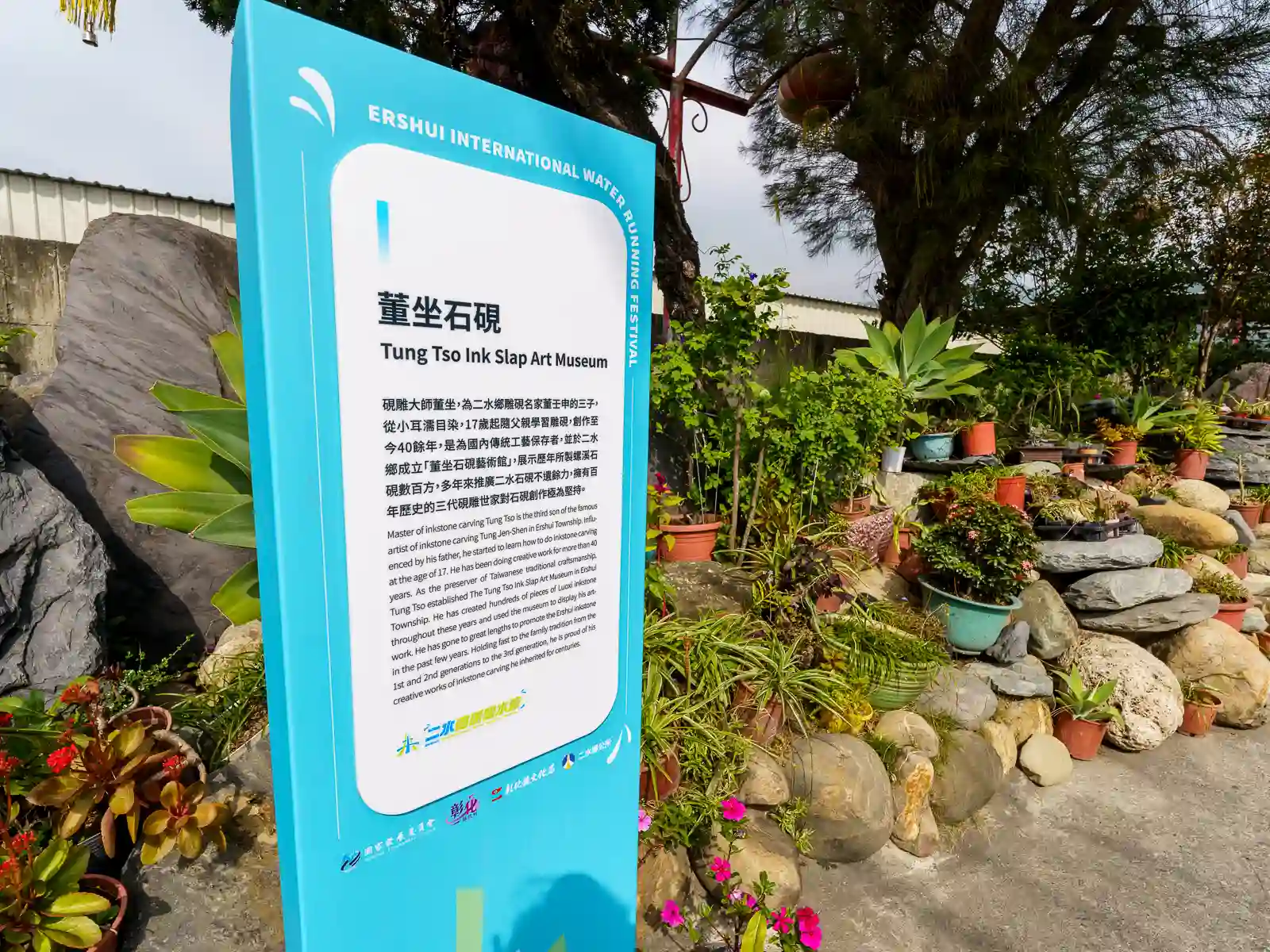
Dongzuo’s Inkstone Art Center (also known as Tung Tso Ink Slap Art Museum) in Ershui showcases a collection of intricate inkstone carvings and embossments, created by master inkstone carver Dong Zuo. Visitors can view the large collection of inkstones exhibited, gain insights into this traditional art, and immerse themselves in the world of inkstone culture.
Inkstones are tools used in traditional calligraphy and painting. They are typically made of stone and have a smooth, concave surface where ink is ground with water to create ink for writing or painting. Inkstones are not only functional but also considered works of art, with intricate carvings and designs that reflect the cultural heritage and craftsmanship of the region.

